Book Review – The Case For Christ

The Case For Christ should be required reading for all Christians. A bold statement, I know, but it truly is an incredible book. I certainly would not say it is the best book I’ve ever read, nor the most profound. But what this book does, and does very well, is set forth in a clear and unequivocal manner, the evidence that Christ existed and that He was exactly who and what He said He was.
The book follows journalist Lee Strobel on his quest to discover the truth about Jesus. His quest begins with his wife’s conversion to Christianity. A staunch atheist, he noticed her life begin to change and through her silent witness started to realize that something real had happened in her life. So, using his skills as a journalist, he set out to find out who Jesus really was. Though he read many books and journals dealing with Jesus, The Case For Christ is essentially a record of his interviews with thirteen eminent scholars, each of whom is an expert in a different area relating to Jesus. Strobel examined, among other things, the life of Jesus, who Jesus said He was, who others said Jesus was and the accuracy of the Scriptures. His examination is detailed and conclusive and ultimately he leaves it to the reader to decide what to do with the evidence.
This book is very well written and can be studied over a course of weeks or read in a couple of evenings. It is a fantastic read for Christians who are interested in learning more about the origins, accuracy and uniqueness of the Bible. It is also an excellent choice for anyone seeking to know more about Christianity and wishing to undertake an examination of the case for Christ.


The Night Is Far Gone
There are few things in life more shameful than sleeping when you ought to be working, or slacking off when you ought to be diligent. When your calling is to be active, it is inappropriate and even sinful to remain passive. This is especially true when it comes to contexts that are of the highest…

A La Carte (April 15)
A La Carte: Personal reflections on the 2024 eclipse / New earth books / 7 questions that teens need to answer / Was there really no death before the fall? / How to be humble instead of looking humble / Kindle deals / and more.

Exactly the Purpose God Intended
General revelation serves exactly the purpose God intended for it—it reveals his power and divine nature. But, its message, while important, is insufficient—insufficient by design. Though general revelation tells us about the existence of God, it does not tell us about how to be reconciled to God.

Weekend A La Carte (April 13)
A La Carte: The pain of being single; the love that holds me fast / The Christian response to cultural catastrophe / The reduction of public Bible reading / All Things (a new song) / Why should I go to church? / and more.

Free Stuff Fridays (Moody Publishers)
This giveaway is sponsored by Moody Publishers, who also sponsored the blog last week with Overflowing Mercies. Attention all Bible scholars, believers in the power of faith, and lovers of the Word! Learn about God’s divine mercy and compassion with our exclusive Bible Study Giveaway. Win the ultimate bible study library including Overflowing Mercies by…

How Should We Then Die?
Euthanasia makes a lot of sense. At least in our culture at this time, it makes intuitive sense that those who are ill without hope for a cure or those who are in pain without likelihood of relief ought to be able to choose to end their own lives. Our culture assumes there are few…
Explore More
Collections & series.

Book Reviews

All collections and series →
Bible biography Bonhoeffer books Christian living church current issues disability marriage parenting personal prayer sin suffering theology
All topics →
Top Scripture References
Genesis 1 Genesis 3 Psalm 119 Matthew 18 John 3:16 John 10:10 Romans 1 Romans 8:28 Romans 12:2 Ephesians 5 Philippians 4:8 Colossians 3:16
All Scripture references →
Recent Dates
- February 2024
- January 2024
- December 2023
- November 2023
- October 2023
- September 2023
- August 2023
All dates →

Get news & reviews in your inbox
- Prime Video
- Documentary
- Producers Corner
- Watch Lists
- More Than A Movie Night
- It’s Dove Approved – Family Movie Trivia Game
- Dove Ratings
- Privacy Policy

The Case for Christ
Dove review.
This is a very powerful documentary. Lee Strobel, the former atheist, goes on a search to prove the existence of Christ. He is amazed in what he discovers in his journey. He interviews several professors, studies the history of Christ himself, and discovered some things which enlightened him, such as the gospels (Matthew, Mark, Luke and John) fit in accurately with history,
He further researches the eyewitnesses to Christ’s resurrection, and comes to some definite conclusions. An example of his findings is that both James, the half-brother of Jesus, and Saul (later Paul) both were non-believers when Christ lived but actually were converted after the resurrection. This is a spiritual journey the viewer will not want to miss. It is done in the light of academics and the researcher kept an open mind.
Although we recognize this subject might not keep young children’s attention, we award it our Dove “Family-Approved” Seal for all ages. Most viewers will find it to be a fascinating journey.
Dove Rating Details
Brief talk about and illustrations of crucifixion.
A husband and wife have problems when she begins attending church.
More Information
Film information, dove content.

Faith Film Producer DeVon Franklin Steps in Front of the Camera for ‘Jesus Revolution’

Cyrano: Love is a Verb

Redeeming Love: Grace Rising Up Out of the Dirt

Filmmakers Highlight the Hope and Heroism in “Gi...

The Case for Christ
A Journalist's Personal Investigation of the Evidence for Jesus
Lee Strobel | 4.47 | 98,531 ratings and reviews
Ranked #1 in Apologetics , Ranked #1 in Jesus — see more rankings .
Want to learn the key points of "The Case for Christ" in 21 minutes?
Get a full book summary of The Case for Christ by signing up for Shortform .
Shortform summaries help you learn 10x faster by:
- Being 100% comprehensive: you learn the most important points in the book
- Cutting out the fluff: you don't spend your time wondering what the author's point is.
- Interactive exercises: apply the book's ideas to your own life with our educators' guidance.
Reviews and Recommendations
We've comprehensively compiled reviews of The Case for Christ from the world's leading experts.
Anna Khait @adumbgreen Jesus is far from fictional. Him and the Bible has been proven by atheist liberal historians. I would suggest doing research on it. Nothing more important than finding salvation for your soul. The Lord loves you. Fantastic book: The Case for Christ; an atheist went to investigate (Source)
Rankings by Category
The Case for Christ is ranked in the following categories:
- #8 in Bible Study
- #5 in Christian
- #2 in Christian Theology
- #4 in Encyclopedias
- #3 in Faith
- #10 in Journalists
- #26 in Ministry
- #14 in Religion
- #6 in Spiritual Growth
- #6 in Theology
Similar Books
If you like The Case for Christ, check out these similar top-rated books:

Learn: What makes Shortform summaries the best in the world?
Book Review: The Case For Christ By Lee Strobel
The case for christ by lee strobel.
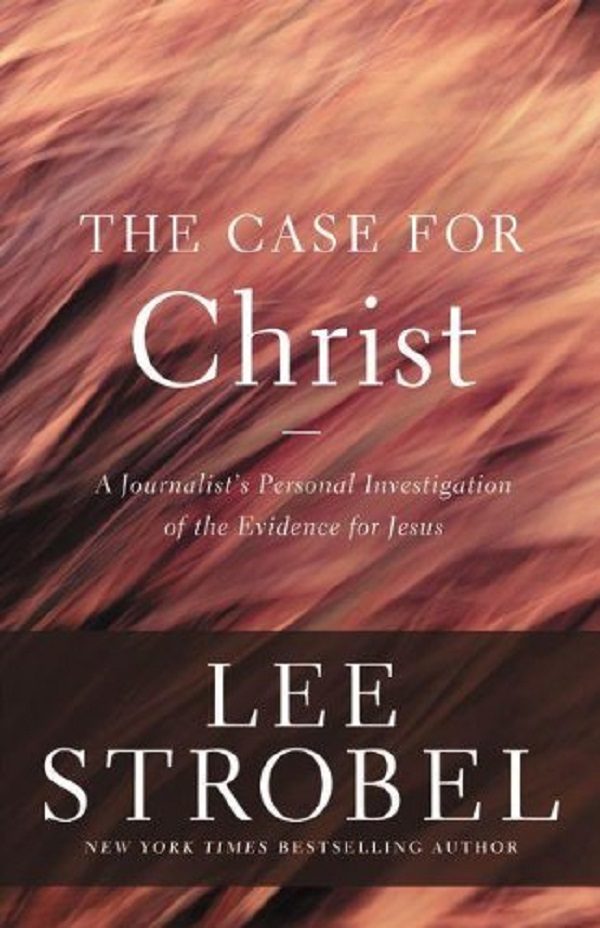
Source: Amazon
Lee Strobel is an amazing writer. Being a former atheist with a background in law and journalism, he attacked the issue head on and straight to the heart of the matter. He was not searching for the meaning of Christ’s sacrifice, or the love of Christ that has changed so many lives already, but instead he went to tackle perhaps the most fundamental thing — whether Jesus Christ of Nazareth even existed in the first place.
His search for the evidences of Christ’s existence took him to 13 well-respected, high-caliber evangelical scholars and apologists. As Strobel went from one scholar to another, he brought with him all the questions that had always bothered him as a skeptic of the Christ. “Can the biographies of Jesus be trusted?” Do these biographies stand up to scrutiny? What about the apparent contradictions of the four gospels? Did Jesus really die on the cross, and if He did, did He really rise from the grave after three days? Are there any other collaborative evidences outside of the Scriptures that prove the existence of Jesus Christ?
Despite being a believer, I’d be lying if I said these questions never crossed my mind. This is what I liked about this book. It’s “a journalist’s personal investigation of the evidence for Jesus,” but it is great reading for both believers and non-believers. This book is not perfect in all of its arguments and answers, but then again, where can we ever find a document with all the perfect arguments and questions ever raised?
My take on this book is that it is a great supplement and reinforcement to my personal journey of faith. The Case for Christ did not answer all of my questions, (the Bible already did that for me), but Strobel did a great job in excavating historical truths and life-changing insights.
For all the people objectively seeking the truth about Christ, I would highly recommend this reading, but this book should not replace the Gospels. When you read The Case for Christ , you should examine all the evidences and arguments presented, but I want you to look beyond the facts and immerse into the experience of discovering and knowing Christ personally. The main purpose of this book is not to bring you to attain mere facts or trivia on Jesus Christ, but the experiential truth of Jesus’ love, which you could only know personally within yourself.
Image via Amazon .
About The Author
Nizza Gueco
Related posts.

The Smithsonian Celebrates Turkish and Islamic Art With Its Exhibit, ‘The Art Of The Qu’ran’
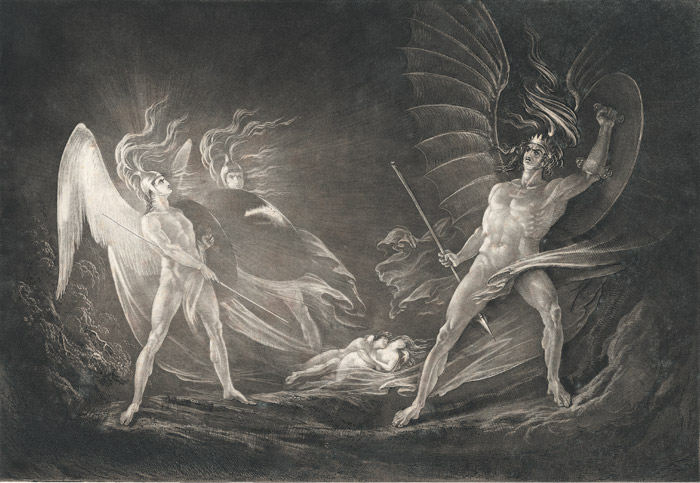
5 Reasons To Give ‘Paradise Lost’ A Second Chance
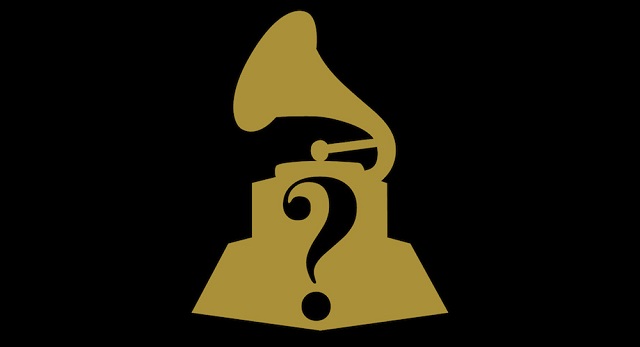
But Can They Write? 5 Grammy Winners Who Are Also Authors

- Privacy Overview
- Strictly Necessary Cookies
This website uses cookies so that we can provide you with the best user experience possible. Cookie information is stored in your browser and performs functions such as recognising you when you return to our website and helping our team to understand which sections of the website you find most interesting and useful.
Strictly Necessary Cookie should be enabled at all times so that we can save your preferences for cookie settings.
If you disable this cookie, we will not be able to save your preferences. This means that every time you visit this website you will need to enable or disable cookies again.

The Case for Christ
by Lee Strobel
- On Sale: 1998-08-25
- Barnes and Noble
- Google Play
- Book Overview
- Author Info
Book Summary
Using the dramatic scenario of an investigative journalist pursuing his story and leads, Strobel uses his experience as a reporter for the Chicago Times to interview experts about the evidence for Christ from the fields of science, philosophy, and history.
About the Book
A seasoned journalist chases down the biggest story in history Is there credible evidence that Jesus of Nazareth really is the son of God? Retracing his own spiritual journey from atheism to faith, Lee Strobel, former legal editor of the Chicago Tribune, cross-examines a dozen experts with doctorates from schools like Cambridge, Princeton, and Brandeis who are recognized authorities in their own fields. Strobel challenges them with question like How reliable is the New Testament? Does evidence for Jesus exist outside the Bible? Is there any reason to believe the resurrection was an actual event? What documentation is there concerning the life and teachings of Jesus, and how reliable is it? Does archaeology substantiate the historical accounts? Did Jesus really perform miracles? Did he claim to be God—and if so, did he fit the profile? Strobel’s tough, point-blank questions make this Gold Medallion—winning book read like a captivating, fast-paced novel. But it’s not fiction. It’s a riveting quest for the truth about history’s most compelling figure. What will your verdict be in the The Case for Christ?
Platinum Book Award Christian Book Award Winner
Product Details
- Imprint: Zondervan
- Publisher: Zondervan
- Publication Date: 1998-08-25
- Trim Size: 4.130in x 6.750in x 1.130in
- Weight: 199.000gr
Lee Strobel
Lee Strobel, former award-winning legal editor of the Chicago Tribune , is a New York Times bestselling author whose books have sold millions of copies worldwide. Lee earned a journalism degree at the University of Missouri and was awarded a Ford Foundation fellowship to study at Yale Law School, where he received a Master of Studies in Law degree. He was a journalist for fourteen years at the Chicago Tribune and other newspapers, winning Illinois’ top honors for investigative reporting (which he shared with a team he led) and public service journalism from United Press International. Lee also taught First Amendment Law at Roosevelt University. A former atheist, he served as a teaching pastor at three of America’s largest churches. Lee and his wife, Leslie, have been married for more than fifty years and live in Texas. Their daughter, Alison, and son, Kyle, are also authors. Website: www.leestrobel.com
- International edition
- Australia edition
- Europe edition

The Case for Christ review – if you’re looking for a God time…
This tale of a journalist’s crisis of faith, based on Lee Strobel’s book, is unlikely to sway any doubters
S et in Chicago in 1980 and based on the bestselling book by former atheist Lee Strobel, The Case for Christ makes the exact argument its title promises. Strobel (Mike Vogel) is an arrogant newspaper journalist who believes in “facts, not feelings”. But, to quote the dancer Yvonne Rainer, feelings are facts, or at least they are according to those who believe in God. When his wife, Leslie (Erika Christensen, the best thing about the film), converts to Christianity, he’s furious (“You’re cheating on me, with Jesus!”), doubling down on his secular stance.
It’s clearly intended as a teaching text, though its evidence-based defence of faith (eyewitness testimonials of the Resurrection, a medical expert’s opinion on whether Jesus died on the cross) is a straw-man argument unlikely to have nonbelievers queuing up to be baptised. The film’s more interesting subtext is Strobel’s anxious masculinity and his insistence that he should be the thing that gives his wife meaning.
- Drama films
- The Observer
Comments (…)
Most viewed.
The Case For Christ
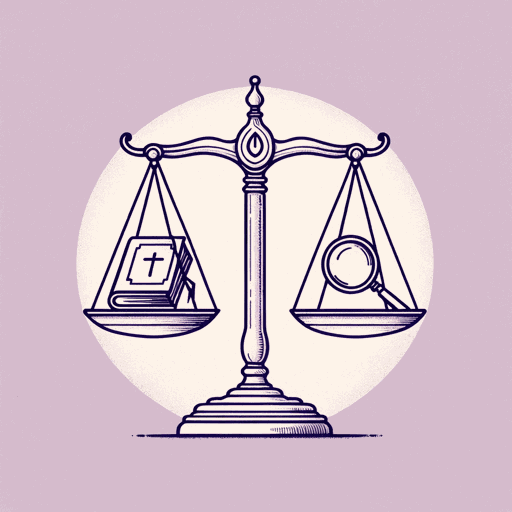
66 pages • 2 hours read
A modern alternative to SparkNotes and CliffsNotes, SuperSummary offers high-quality Study Guides with detailed chapter summaries and analysis of major themes, characters, and more.
Chapter Summaries & Analyses
Introduction-Part 1, Chapter 3
Part 1, Chapters 4-6
Part 2, Chapters 7-10
Part 3, Chapter 11-Conclusion
Key Figures
Symbols & Motifs
Important Quotes
Essay Topics
Discussion Questions
Summary and Study Guide
The Case for Christ , by Lee Strobel , originally published in 1998, follows Strobel’s nonfiction, journalistic investigation into the claims of Christianity. Strobel is both a journalist and a lawyer—he earned an undergraduate degree in journalism from the University of Missouri and a law degree from Yale before joining the Chicago Tribune as a legal affairs editor. But when his wife, Leslie, becomes a Christian, Strobel launches into an “all-out investigation into the facts surrounding the case for Christianity” (16). He applies what he has learned as an investigative journalist and a lawyer to determine whether “there [is] any credible evidence to back up” (18)the Bible’s assertions about the existence of God and the salvation of mankind through the crucifixion of Jesus Christ .
In order to do this, Strobel decides to interview a dozen experts in Christian theology to better understand the Bible, its teachings, the life of Christ, and whether any of those things are believable. To do this, he splits the book into three major sections. The first part, which contains Chapters 1 through 6, is titled “Examining the Record.” In these chapters, he interviews academics who have a variety of backgrounds, but they all comment on one thing: whether the Bible is a verifiable text. Each chapter in this section—and throughout the entirely of the book—follows a specific structure. Strobel opens with a short anecdote from his time in the legal system , then spends the overwhelming majority of the chapter in conversation with his chosen expert. A short conclusion at the end of each chapter lets Strobel sum up the expert’s argument while sometimes offering his own interpretation and/or verification of the facts.
Get access to this full Study Guide and much more!
- 7,500+ In-Depth Study Guides
- 4,900+ Quick-Read Plot Summaries
- Downloadable PDFs
The first part of the book opens with two interviews with Dr. Craig Blomberg , who addresses Strobel’s concerns about whether the gospels—which are the four books that serve as Jesus’s biography—can be trusted. The third chapter focuses on how well the Bible has been preserved, and whether the book Christians use today has been altered from its original forms. The fourth chapter features an interview with Dr. Edwin Yamauchi, a professor who focuses on Christian history. He shows Strobel how non-Christian (i.e. secular) texts mention Jesus, his miracles, and his crucifixion in much the same way as the Bible; Yamauchi argues that this serves as corroboration for the Bible’s veracity. In his fifth chapter, Strobel speaks with Dr. John McRay, an archaeologist. While McRay explains that “spiritual truths cannot be proved or disproved by archaeological discoveries” (127), he does state that the archaeological record verifies both locations and events that appear in the Bible. Finally, Strobel concludes the first part of The Case for Christ by interviewing Dr. Gregory Boyd, who provides “rebuttal evidence” (147). He tackles some of the counterarguments given by the Jesus Seminar—a group of fringe Christian theologians—that challenge the legitimacy of the Bible.
The second part of The Case for Christ is titled “Analyzing Jesus” and encompasses Chapters 7 through 10. In this section, Strobel turns his investigation to Jesus’s life and claims. He walks through four key questions. The first is whether Jesus actually believed himself to be the Son of God, and he turns to Dr. Ben Witherington III to find some answers. Once Strobel is convinced Jesus believed in his own divine origins, he begins to wonder whether Jesus was crazy. His interview with Dr. Gary Collins convinces him otherwise, especially when Strobel reads the gospels himself and finds “no sign of dementia, delusions, or paranoia” (206). This prompts yet another question: if Jesus thought he was God, did he embody the attributes of God? If not, it would be easy to conclude that Jesus was just a charismatic man. But Dr. Donald Carson convinces him otherwise, which prompts Strobel to wonder whether Jesus actually fulfilled the Jewish prophesies of the Messiah. To answer this question, Strobel visits with Louis Lapides, a Jewish man who converted to Christianity after his own spiritual journey. Much of this interview is Lapides’s testimony—or conversion story—but he also tells Strobel that “so convincing were the fulfilled prophecies” that he started telling everyone that “Jesus was the Messiah” (242-43).
The SuperSummary difference
- 8x more resources than SparkNotes and CliffsNotes combined
- Study Guides you won ' t find anywhere else
- 100+ new titles every month
The third, and final, section of Strobel’s investigation switches from the life of Jesus to his death. Part 3, titled “Researching the Resurrection,” tackles the fundamental Christian idea that Jesus was killed, resurrected, and then eventually raised back up to heaven. Strobel starts by speaking with Dr. Alexander Metherell, a medical doctor who has researched the crucifixion. Metherell explains that there is no conceivable way that Jesus survived the crucifixion, and he walks Strobel through the medical realities of suffering such a brutal death. Strobel then turns to Dr. William Craig, who provides a mixture of historical and textual evidence to prove that Jesus’s body disappeared from the tomb. Craig also tackles the contradictions in the gospels that muddy the waters, concluding “that there is a historical core to this story that is reliable and can be depended upon, however conflicting the secondary details might be” (289). Next, Strobel wants to understand whether Jesus was truly seen alive after the cross, or if his body was just missing. Dr. Gary Habermas uses the creed, or formal statement of Christian beliefs, found in 1 Corinthians as the backbone of his argument and explains that Jesus was not only seen by hundreds of people, he ate with them, spoke to them, and touched them as well. In his last chapter, Strobel once again returns to the idea of corroborating evidence that he introduces in Chapter 2. He wants to determine whether the resurrection is substantiated outside of the Bible, so he speaks with Dr. J. P. Moreland. Moreland provides five examples that support the idea of a real resurrection, including a mass conversion of Jewish skeptics shortly after Jesus’s death and the rapid emergence of the early Christian church.
Strobel ends The Case for Christ with a conclusion that does two things. First, it sums up the arguments from each chapter in a few paragraphs in order to collect the most important proof in one place. Second, he walks the readers through his own conversion from atheism to Christianity. He explains that after “a personal investigation that spanned more than six hundred days” (361), he concluded that the evidence in favor of Christianity was much more convincing than the evidence for atheism. On November 8, 1981, Strobel officially converts to Christianity in what he calls “the pivotal event of [his] entire life” (365). The last part of the conclusion does two things. First, it outlines the steps a reader should take if he—like Strobel—has been convinced of Christianity’s validity. Second, it speaks to readers who have not been convinced. Strobel encourages skeptics to research “additional answers from well-respected experts” before coming to their final conclusion, and he gives them his “sincere encouragement” as they “continue in their spiritual quest” (366). Strobel ends his book with one last assertion: that whatever the reader concludes about Christianity and Jesus, the decision will be one of the most important of their life.

Don't Miss Out!
Access Study Guide Now
Related Titles
By Lee Strobel

The Case for Faith
Lee Strobel
Featured Collections
Christian Literature
View Collection
Religion & Spirituality
Trust & Doubt
- Skip to main content
- Skip to footer
Additional menu
Tyler DeVries
The Case for Christ

Read on Amazon
3 Sentence Summary
With the rigor of a seasoned investigative journalist, Lee Strobel’s New York Times bestselling apologetic builds a progressive argument for the reliability and trustworthiness of the New Testament gospels. Through a dozen interviews with world-renowned experts, Strobel tests the accuracy of the gospel narrative and addresses popular critics that challenge the claim that Jesus was the son of God. Regardless of where you are on your faith journey, Christians and nonbelievers alike will enjoy this entertaining quest for the truth about history’s most compelling figure.
5 Key Takeaways
- The biographies of Jesus are based on eyewitness accounts. Not enough time elapsed between Jesus’ death and the earliest manuscripts for legends to develop.
- The manuscript evidence for the New Testament is overwhelming when juxtaposed against other revered writings of antiquity. There are ~24,000 manuscripts, some dating back to the second century.
- The Jesus story is rooted in historical truth. Archaeology’s repeated affirmation of the New Testament’s accuracy provides important corroboration for its reliability.
- The Jesus in the New Testament fulfills every prophesy made centuries earlier in the Old Testament. This is statistically impossible to happen by chance.
- Jesus’ death and resurrection is logically supported by affirmative and circumstantial evidence. No other explanation other than what’s presented in the New Testament can adequately explain the massive cultural shift and rapid growth of the Christian church.
The Case for Christ Summary
Please Note
The following book summary is a collection of my notes and highlights taken straight from the book. Most of them are direct quotes. Some are paraphrases. Very few are my own words.
These notes are informal. I try to organize them by chapter. But I pick and choose ideas to include at my discretion.
Part 1: Examining the Record
1. the eyewitness evidence: can the biographies of jesus be trusted, interview #1: dr. craig blomberg.
- The book of Matthew was written by the tax collector and disciple Matthew (also knowns as Levi), the book of Mark was written by John Mark, a companion of Peter, and the books of Luke and Acts were written by Luke, the “beloved physician” of Paul.
- The gospel of John is the only book where authorship has any dispute.
- The apostle John is widely believed to be the author, however, there may have been somebody else involved who helped John with stylistic editing.
- All gospels are based on eyewitness accounts.
More Evidence of Authorship
- Papias in year 125 AD specifically affirmed that Mark had carefully and accurately recorded Peter’s eyewitness observations.
- Irenaeus , writing in year 180 AD, confirmed the gospel’s original authorship.
Ancient Biographies
- Ancient biographies were not written in the same literary style as modern biographies.
- The only purpose ancients saw to record history was because there were some lessons to be learned from the characters described. Only the important moments by this standard were recorded.
- The theological reason for not including more detail about Jesus’ life in the gospels is that all of his teachings and miracles were meaningless if it were not historically factual that Christ died and was raised from the dead and that this provided atonement for the sins of humanity. His death and resurrection is the most important narrative and thus receives the most attention by the gospel writers.
The Unique Perspective of John
- The first three gospels of Matthew, Mark, and Luke are called the synoptics , which means “to view at the same time,” because of their similar outline and interrelationship.
- John includes many different stories of Jesus’ ministry.
- John uses a very different linguistic style and terminology.
- Jesus often refers to himself as the “Son of Man” in the synoptics. This title does not primarily refer to Jesus’ humanity. Instead it is a direct allusion to Daniel 7:13-14.
- “Son of Man” is a title given to someone who approaches God himself in his heavenly throne room and is given universal authority and dominion. It is a title of great exaltation.
In my vision at night I looked, and there before me was one like a son of man, coming with the clouds of heaven. He approached the Ancient of Days and was led into his presence. He was given authority, glory and sovereign power; all nations and peoples of every language worshiped him. His dominion is an everlasting dominion that will not pass away, and his kingdom is one that will never be destroyed. Daniel 7:13-14
Theological Emphasis
- Matthew emphasizes the relationship between Christianity and Judaism.
- Mark portrays Jesus as the suffering servant.
- Luke is the theologian of the poor and of social concern.
- John highlights the divinity of Christ and makes clear the claim that Jesus is God.
Were the Gospels Written Too Late?
- Mark was written in the 70s, Matthew and Luke in the 80s, and John in the 90s.
- These are all still within the lifetimes of various eyewitnesses of the life of Jesus, including hostile eyewitnesses who would have served as a corrective if false teaching about Jesus were going around.
- There’s good evidence from the book of Acts that Mark was written even earlier. Perhaps as early as the late 50s.
- The two earliest biographies of Alexander the Great were written by Arrian and Plutarch more than 400 years after Alexander’s death in 323 BC, yet historians consider them to be generally trustworthy.
- The gap between the events of Jesus’ life and the writings of the gospels is negligible by historical standards.
The Earliest Manuscripts
- The New Testament books are not in chronological order.
- The gospels were written after almost all the letters of Paul, whose writing ministry probably began in the late 40s.
- Paul incorporated some creeds, confessions of faith, or hymns from the earliest Christian church. These go way back to the dawning of the church soon after the Resurrection.
For what I received I passed on to you as of first importance: that Christ died for our sins according to the Scriptures, that he was buried, that he was raised on the third day according to the Scriptures, and that he appeared to Cephas, and then to the Twelve. After that, he appeared to more than five hundred of the brothers and sisters at the same time, most of whom are still living, though some have fallen asleep. Then he appeared to James, then to all the apostles, and last of all he appeared to me also, as to one abnormally born. 1 Corinthians 15
2. Testing The Eyewitness Evidence: Do the Biographies of Jesus Stand Up to Scrutiny?
The intention test.
- The gospels are written in a sober and responsible fashion. You don’t find outlandish flourishes and blatant mythologizing that you see in a lot of other ancient writings.
- It seems quite apparent that the goal of the gospel writers was to attempt to record what had actually occurred.
- The disagreements surrounding the early church, and those that continue today, demonstrate that Christians were interested in distinguishing between what happened during Jesus’ lifetime and what was debated later in the churches.
The Ability Test
- The ancient Jews were an oral culture in which there was great emphasis placed on memorization.
- 80-90% of Jesus’ words were originally in poetic form. It had a meter, balanced lines, and parallelism that would have made it much easier to memorize.
- The gospel writers and early Christian community were not playing a game of telephone. They were very careful to preserve the integrity of the message by constant monitoring and intervention to make corrections.
The Character Test
- The writers of the gospel were men of great integrity.
- They reported the words and actions of a man who called them to as exacting a level of integrity as any religion has ever known.
- They were willing to live out their beliefs to the point of ten of the eleven remaining disciples being put to grisly deaths.
The Consistency Test:
- There are numerous points at which the gospels appear to disagree. However, once you allow for paraphrase, of abridgment, of explanatory additions, of selections, of omission—the gospels are extremely consistent with each other by ancient standards, which are the only standards by which it’s fair to judge them.
- There is enough of a discrepancy to show that there could have been no previous concert among them; and at the same time such substantial agreement as to show that they all were independent narrators of the same great transaction.
- It would be very suspicious if all the ancient accounts of Jesus’ life were completely free of contradictions.
The Bias Test
- The gospel writers were not natural observers; they were Jesus’ devoted followers. Could this mean that they were motivated to change things to make him look good?
- It’s also possible they had a desire to record Jesus’ life with great integrity out of honor and respect.
- The disciples had nothing to gain except criticism, ostracism, and martyrdom. They had no financial incentive. If anything, they had every reason to keep quiet, to deny Jesus, and to downplay his teachings.
The Cover-Up Test
- Did the writers conveniently forget to mention details that are embarrassing or hard to explain?
- No—There’s a large body of Jesus’ teaching called the hard sayings of Jesus. Some of it is very ethically demanding.
- Mark 6:5 says that Jesus could do few miracles in Nazareth because the people there had little faith, which seems to limit Jesus’ power.
- Jesus said in Mark 13:32 that he didn’t know the day or the hour of his return, which seems to limit his omniscience.
- The gospels portray Jesus’ disciples as a bunch of self-serving, self-seeking, dull-witted people a lot of the time.
The Corroboration Test
- Within the last hundred years archaeology has repeatedly unearthed discoveries that have confirmed specific references in the gospels.
The Adverse Witness Test
- There were many enemies of Jesus who wanted to discredit the early Christian movement, but were unable to do so because their false version of history was more difficult to believe than the truth.
3. The Documentary Evidence: Were Jesus’ Biographies Reliably Preserved for Us?
Interview #2: bruce m. metzger, ph.d..
- There are no surviving original manuscripts of the New Testament.
- Compared to other ancient texts, the New Testament has by far the most manuscript copies.
- Today there have been over 5,000 Greek manuscripts cataloged, many dating back to within a couple of generations from the writing of the originals.
- In addition to Greek manuscripts, there are thousands of other ancient New Testament manuscripts in other languages. There are 8,000 to 10,000 Latin Vulgate manuscripts, plus a total of 8,000 in Ethiopic, Slavic, and Armenian. In all, there are about 24,000 manuscripts in existence.
How the New Testament Compares to Other Ancient Manuscripts
- Tacitus, the Roman historian, wrote his Annals of Imperial Rome in about 116 AD. His first six books exist today in only one manuscript, and it was copied about 850 AD.
- We have nine Greek manuscripts of the first-century historian Josephus’ The Jewish War, which were copied in the tenth, eleventh, and twelfth centuries.
- There are fewer than 650 Greek manuscripts of Homer’s Iliad (800 BC) that were copied in the second and third century AD.
- The manuscript evidence for the New Testament is overwhelming when juxtaposed against other revered writings of antiquity—works that modern scholars have absolutely no reluctance treating as authentic.
Oldest New Testament Manuscripts
- The Chester Beatty Biblical Papyri discovered in 1930 contain portions of the four gospels and the book of Acts. It dates back to the third century.
- A fragment of the gospel of John, containing material from chapter eighteen, dates back to 100-150 AD.
Contradicting Manuscripts
- There are tens of thousands of variations among the ancient manuscripts.
- But in Greek, one word functions as the subject of the sentence regardless of where it stands in the sentence; consequently, the meaning of the sentence isn’t distorted if the words are out of what we consider to be the right order.
- Variations, when they occur, tend to be minor rather than substantive. And the more significant variations do not overthrow any doctrine of the church.
How did the early church leaders determine which books to include in the New Testament?
- First, the books must have apostolic authority—that is, they must have been written either by apostles themselves, who were eyewitnesses to what they wrote about, or by followers of apostles.
- Second, the books must conform to the rule of faith—that is, the document must be congruent with the basic Christian tradition that the church recognized as normative.
- Third, the book had to have had continuous acceptance and usage by the church at large.
- The canon (books of the New Testament) was not the result of a series of contests involving church politics.
- The canon is a list of authoritative books more than it is an authoritative list of books. These documents didn’t derive their authority from being selected; each one was authoritative before anyone gathered them together.
4. The Corroborating Evidence: Is There Credible Evidence for Jesus Outside His Biographies?
Interview #3: edwin m. yamauchi, ph.d..
- Josephus was a very important Jewish historian of the first century. He was born in 37 AD and he wrote most of his four works toward the end of the first century.
- Josephus mentions Jesus in The Antiquities and the Testimonium Flavianum .
- Today there’s a remarkable consensus among both Jewish and Christian scholars that the passage as a whole is authentic, although there may be some interpolations.
- Why did Josephus only mention Jesus in passing, but covered other figures like John the Baptist in greater detail? Because Josephus was interested in political matters and the struggle against Rome, so for him John the Baptist was more important because he seemed to pose a greater political threat than did Jesus.
He convened a meeting of the Sanhedrin and brought before them a man named James, the brother of Jesus, who was called the Christ, and certain others. He accused them of having transgressed the law and delivered them up to be stoned. Josephus, The Antiquities
- Tacitus was the most important Roman historian of the first century.
- This is an important testimony by an unsympathetic witness to the success and spread of Christianity.
Nero fastened the guilt and inflicted the most exquisite tortures on a class hated for their abominations, called Christians by the populace. Christus, from whom the name had its origin, suffered the extreme penalty during the reign of Tiberius at the hands of one of our procurators, Pontius Pilatus, and a most mischievous superstition, thus checked for the moment, again broke out not only in Jedaea, the first source of the evil, but even in Rome… Accordingly, an arrest was first made of all who pleaded guilty: then, upon their information, an immense multitude was convicted, not so much of the crime of firing the city, as of hatred against mankind. Tacitus
Pliny the Younger
- Pliny the Younger was the nephew of Pliny the Elder, the famous encyclopedist who died in the eruption of Vesuvius in 79 AD. Pliny the Younger became governor of Bithynia in north-western Turkey.
- In book 10 of his letters to his friend, Emperor Trajan, he specifically refers to the Christians he has arrested.
- Most likely written about 111 AD, these letters attest to the rapid spread of Christianity, the worship of Jesus as God, and that they were not easily swayed from their beliefs.
The Day The Earth Went Dark
- The New Testament gospel writers claim that the earth went dark during part of the time that Jesus hung on the cross.
- A historian named Thallus (52 AD) wrote a history of the eastern Mediterranean world beginning with the Trojan War. Although his work has been lost, it was quoted by Julius Africanus in about 221 AD—and it made reference to the darkness that the gospels had written about.
Other Jewish Accounts
- There are a few passages in the Jewish Talmud, an important work finished about 500 AD, that mention Jesus, calling him a false messiah who practiced magic and who was justly condemned to death.
- They also repeat the rumor that Jesus was born of a Roman soldier and Mary, suggesting there was something unusual about his birth.
- In a negative way these Jewish references do corroborate some things about Jesus.
- The apostle Paul never met Jesus prior to his death, but he said he did encounter the resurrected Christ and later consulted eyewitnesses to make sure he was preaching the same message as them.
- Paul began writing his New Testament letters years before the gospels were written down. His letters contain extremely early reports concerning Jesus.
- Paul focus on Jesus’ atoning death and resurrection. He doesn’t mention the parables or miracles highlighted in the gospels.
- Paul corroborates some important aspects of the character of Jesus—his humility, obedience, love for sinners, and so forth.
5. The Scientific Evidence: Does Archaeology Confirm or Contradict Jesus’ Biographies?
Interview #4: john mcray, ph.d..
- Spiritual truths cannot be proved or disproved by archaeological discoveries.
- If an ancient historian’s incidental details check out to be accurate time after time, this increases our confidence in other material that the historian wrote but that cannot be as readily cross-checked.
Luke’s Accuracy As A Historian
- The general consensus of both liberal and conservative scholars is that Luke is very accurate as a historian.
- One prominent archaeologist carefully examined Luke’s references to thirty-two countries, fifty-four cities, and nine islands, finding not a single mistake.
Puzzle 1: The Census
- How could a the government possibly force all its citizens to return to their birthplace? Is there any archaeological evidence whatsoever that this kind of census ever took place?
- Discovery of ancient census forms dated back to 104 and 48 AD confirm the practice of requiring families to return to the father’s birthplace.

Puzzle 2: Existence of Nazareth
- Did the town of Nazareth exist during the time when the New Testament says Jesus spent his childhood there?
- Archaeologists have found a list in Aramaic describing 24 families of priests who were relocated, and one of them was registered as having been moved to Nazareth.
- In addition, there have been archaeological digs that have uncovered first-century tombs in the vicinity of Nazareth, which would establish the village’s limits because by Jewish law burials had to take place outside the town proper.
- Such findings suggest that Nazareth existed in Jesus’ time, but there is no doubt that it was a very small and insignificant place.
Puzzle 3: Slaughter at Bethlehem
- The gospel of Matthew records that Herod the Great, the king of Judea, dispatched troops to murder all the children under the age of two in Bethlehem. The problem: there is no independent confirmation that this mass murder ever took place. Nothing from Josephus or other historians.
- First, Bethlehem was probably no bigger than Nazareth, so how many babies of that age would there have been in a village of five or six hundred people? Not that many.
- Second, Herod the Great was a blood-thirsty king. He killed members of his own family, and executed lots of people who he thought might challenge him. So the fact that he killed some babies in Bethlehem is not going to make big news in the Roman world.
- Third, there was no television, radio, or newspapers. Word of this tragedy would have taken a long time to get out, especially from such a minor village way in the back hills of nowhere.
Riddle of the Dead Sea Scrolls
- The Dead Sea Scrolls is a collection of hundreds of manuscripts dating from 250 BC to 68 AD that were found in caves twenty miles east of Jerusalem in 1947.
- Jesus is not specifically mentioned in any of the scrolls. They primarily give insights into Jewish life and customs.
- Manuscript 4Q521 contains a version of Isaiah 61 that includes the missing phrase “the dead are raised” which Jesus paraphrases when questioned by John the Baptists’ disciples. Jesus was not being ambiguous in his answer. John would have instantly recognized his words as a distinct claim that Jesus was the Messiah.
- Archaeology’s repeated affirmation of the New Testament’s accuracy provides important corroboration for its reliability. This is in stark contrast with how archaeology has proved to be devastating for Mormonism.
- No Book of Mormon cities have ever been located, no Book of Mormon person, place, nation, or name has ever been found, no Book of Mormon scriptures, no Book of Mormon inscriptions… nothing which demonstrates the Book of Mormon is anything other than myth or invention has ever been found.
6. The Rebuttal Evidence: Is the Jesus of History the Same As the Jesus of Faith?
Interview #5: gregory a. boyd, ph.d., the jesus seminar.
- The Jesus Seminar represents an extremely small number of radical-fringe scholars who are on the far, far left wing of New Testament thinking. It does not represent mainstream scholarship.
- They’ve discovered what they set out to find. A Jesus that must be naturalistic, not the supernatural son of God. His death had no special significance. Stories of his resurrection came later as a way of trying to deal with that sad reality.
- Their major assumption is that the gospels are not even generally reliable. They conclude this at the outset because the gospels include things that seem historically unlikely, like miracles. These things, they say, just don’t happen. That’s naturalism, which says that for every effect in the natural or physical world, there is a natural cause.
- They operate under the assumption that everything in history has happened according to their own experiences, and since they’ve never seen the supernatural, they assume miracles have never occurred in history.
Critiquing the Criteria
- Historians usually operate with the burden of proof on the historian to prove falsity or unreliability, since people are generally not compulsive liars. Without that assumption we’d know ver little about ancient history.
- The Jesus Seminar turns this on its head and says you’ve got to affirmatively prove that a saying came from Jesus. Then they come up with a questionable criteria to do that.
Jesus the Wonder Worker
- One approach taken by naturalistic scholars has been to look for parallels between Jesus and others from ancient history as a way of demonstrating that his claims and deeds were not completely unique. Their goal is to explain away the view that Jesus was one of a kind.
- But any parallels between Jesus and other ancient rabbis who did exorcisms or prayed for rain all break down rather quickly when you look closely.
- First, the sheer centrality of the supernatural in the life of Jesus has no parallel whatsoever in Jewish history.
- Second, the radical nature of his miracles distinguishes Jesus. It didn’t just rain when he prayed for it. He cured blindness, deafness, leprosy, and scoliosis. He commanded storms to cease, multiplied bread and fish, cast out demons, and raised sons and daughters from the dead.
- Third, Jesus performed miracles on his own authority. He gives God the Father credit for what he does, but you never find him asking God the Father to do it—he does it in the power of God the Father.
Jesus and the Amazing Apollonius
- Apollonius of Tyana was a philosopher from the first century who was said to have healed people and to have exorcised demons; who may have raised a young girl from the dead; and who appeared to some of his followers after he died.
- If you’re going to admit that the Apollonius story is legendary, why not say the same thing about the Jesus story?
- His biographer, Philostratus, was writing a century and a half after Apollonius lived, whereas the gospels were written within a generation of Jesus. The closer the proximity to the event, the less chance there is for legendary development.
- We have four gospels, corroborated with the letters of Paul, that can be cross-checked to some degree with non-biblical authors, like Josephus and others. With Apollonius we’re dealing with only one source.
- Philostratus was commissioned by an empress to write a biography in order to dedicate a temple to Apollonius. She was a follower of Apollonius, so Philostratus would have had a financial motive to embellish the story and give the empress what she wanted. On the other hand, the writers of the gospel had nothing to gain—and much to lose—by writing Jesus’ story, and they had no ulterior motives such as money.
- The gospels write with a very confident, eye-witness perspective. Philostratus includes many tentative statements, like “It is reported that…” or “Some say this young girl had died; others say she was just ill.”
- Philostratus was writing in the early third century in Cappadocia, where Christianity had already been present for quite a while. So any borrowing would have been done by him, not by Christians.
- Finally, even if you were to grant the evidence of Apollonius, you’re still left with having to deal with the evidence for Christ.
History Versus Faith
- According to the Jesus Seminar, the historical Jesus was a bright, witty, countercultural man who never claimed to be the Son of God, while the Jesus of faith is a cluster of feel-good ideas that help people live right but are ultimately based on wishful thinking.
- But Jesus is not a symbol of anything unless he’s rooted in history. The theological truth is based on historical truth.
Part 2: Analyzing Jesus
7. the identity evidence: was jesus really convinced that he was the son of god, interview #6: ben witherington iii, ph.d..
- Some maintain that the myth of Jesus’ deity was superimposed on the Jesus tradition by over-zealous supporters years after his death.
- Jesus was a bit mysterious about his identity. He tended to shy away from forthrightly proclaiming himself to be the Messiah or Son of God.
- The Jews of Jesus’ day had no concept of the trinity. For someone to say that Jesus was God, or Yahweh, it wouldn’t have made any sense. It would be seen as clear-cut blasphemy.
- There were a host of expectations about what the Messiah would look like, and Jesus didn’t want to be pigeonholed into somebody else’s categories. Consequently, he was very careful about what he said publicly.
Exploring the Earliest Traditions
- If the Twelve disciples represent a renewed Israel, where does Jesus fit in? He’s not just part of Israel, but he’s forming the group—just as God in the Old Testament formed his people and set up the twelve tribes of Israel.
- Jesus says of John the Baptist, “Of all people born of woman, John is the greatest man on earth.” Having said that, Jesus goes even further in his ministry than John did—by doing miracles, for example. What does that say about what he thinks of himself?
- Jesus makes the truly radical statement that it’s not what enters a person that defiles him but what comes out of his heart. This sets aside huge portions of the Old Testament book of Leviticus. What kind of person thinks he has the authority to set aside the divinely inspired Jewish Scriptures and supplant them with his own teaching?
- The Romans hung Jesus on the cross with a sign above his head that said, “This is the King of the Jews.” Either Jesus made that verbal claim, or someone clearly thought he did.
By the Finger of God
- Jesus doesn’t merely see himself as a worker of miracles; he sees himself as the one in whom and through whom the promises of God come to pass. It’s a bold claim of transcendence.
- Jesus as “rabbi” taught in a radical new way. He begins his teachings with the phrase, “Amen I say to you,” which is to say, “I swear in advance to the truthfulness of what I’m about to say.”
- In Judaism you needed the testimony of two witnesses, so witness A could witness the truth of witness B and vice versa. But Jesus witnesses to the truth of his own sayings. Instead of basing his teaching on the authority of others, he speaks on his own authority.
- Jesus used the term “Abba” when he was relating to God. Abba connotes intimacy in a relationship between a child and his father. Jesus and his disciples are the only ones to use this term.
- The significance of “Abba” is that Jesus is the initiator of an intimate relationship that was previously unavailable.
Confirming His Mission
- Jesus had points in his life of identity confirmation—at his baptism, at his temptation, at the Transfiguration, and in the Garden of Gethsemane. These were crisis moments in Jesus’ life in which God confirmed to him who he was and what his mission was.
- Jesus saw his mission as coming to free Israel, God’s chosen people. His ministry was not directed at the Gentiles. That was the role of the early church.
“I and the Father are One”
- Church historian Jaroslav Pelikan has pointed out that the oldest Christian sermon, the oldest account of a Christian martyr, the oldest pagan report of the church, and the oldest liturgical prayer (1 Cor. 16:22) all refer to Jesus as Lord and God.
8. The Psychological Evidence: Was Jesus Crazy When He Claimed to Be the Son of God?
Interview #7: gary r. collins, ph.d..
- People with psychological difficulties may have thinking disorders—they can’t carry on a logical conversation, they’ll jump to faulty conclusions, they’re irrational. We don’t see this in Jesus. He spoke clearly, powerfully, and eloquently. He was brilliant and had absolutely amazing insights into human nature.
- Jesus was loving, but didn’t let his compassion immobilize him; he didn’t have a bloated ego, even though he was often surrounded by adoring crowds; he maintained balance despite an often demanding lifestyle; he always knew what he was doing and where he was going; he cared deeply about people, including women and children, who weren’t seen as being important back then; he was able to accept people while not merely winking at their sin; he responded to individuals based on where they were at and what they uniquely needed.
Jesus the Hypnotist
- Was Jesus a master hypnotist, capable of convincing people under his spell to believe in his exorcisms, his transfiguration, and even his healings?
- Not everybody is equally susceptible to hypnosis. Jesus performed many miracles in front of large crowds of people. There would have been my people present resistant to hypnosis.
- Hypnosis generally doesn’t work on people who are skeptics and doubters. So how did Jesus hypnotize his brother James, who doubted him but later preached the gospel? Or Saul of Tarsus, the opponent of Christianity who later became the leader of the early church?
- Hypnosis does not explain the empty tomb.
- Hypnosis doesn’t last very long. If Jesus tricked people into believing that he had healed a man, eventually they would have found out the truth.
Jesus the Exorcist
- Is it rational to believe that evil spirits are responsible for some illnesses and bizarre behavior?
- We live in a society that believes in angels. There are spiritual forces out there, and it’s not too hard to conclude that some might be malevolent.
- When you see God working, sometimes those forces are more active, and that’s what was probably going on in the time of Jesus.
There are two equal and opposite errors we can fall into concerning demons. One is to disbelieve in their existence. The other is to believe, and to feel an excessive and unhealthy interest in them. They themselves are pleased with both errors. C.S. Lewis
9. The Profile Evidence: Did Jesus Fulfill the Attributes of God?
Interview #8: donald a. carson, ph.d., living and forgiving like god.
- The most striking thing Jesus does is forgive sins.
- Sin, even if it is against another person, is first and foremost a defiance of God and his laws.
- When Jesus comes along and says to sinners, “I forgive you,” the religious leaders immediately recognize it as blasphemy, because nobody but God can forgive sin.
Mystery of The Incarnation
- Incarnation = God becoming man in Jesus.
- This is one of the central mysteries of Christianity. You’re dealing with formless, bodiless, omniscient, omnipresent, omnipotent Spirit and finite, touchable, physical, time-bound creatures.
- If the Incarnation is true, it’s not surprising that finite minds couldn’t totally comprehend it.
- One of the closest explanations is taken from Philippians 2, where Paul tells us that Jesus, being in the form of God, did not think equality with God was something to be exploited, but emptied himself.
- Perhaps Jesus chose independently which attributes of God he would exhibit during his earthly existence.
Creator or Created?
- John 3:16 includes the phrase “his only begotten Son.” This Greek translation does not mean that Jesus was ontologically begotten in time, but rather that Jesus was unique and beloved.
- Colossians 1:15 includes the phrase “firstborn over all creation”. In this case, firstborn does not refer to a birth order, but refers to the Old Testament culture of blessing the firstborn with the lion’s share of the family estate. Firstborn is better translated to mean “supreme heir.”
The Disquieting Question of Hell
- Would God, who is described as a loving Father, really create an endless hell and consign millions of people to it simply because they do not or cannot or will not accept certain religious beliefs?
- With the entrance of sin and rebellion into the world, all humans—who are image bearers of God—have chosen to believe that we are the center of our own universe. We shake our fists at God and say, “I’ll do it my way.” The consequence is that people get hurt.
- From God’s perspective, this is shockingly disgusting. The pinnacle of his good creation have chosen to reject Him and live in a world of pain and suffering.
- What should be God’s response? If he says, “Well, I don’t give a rip,” then he’s saying that evil doesn’t matter to him. What about horrific events like the Holocaust? Don’t we expect that a good and just God would have moral judgements on evil such as this?
- If he’s the sort of God who has moral judgements on these glaring examples of evil throughout history, then he must also have moral judgements on all the divine image bearers shaking their puny fists at his face saying “I’ll do it my way.” That’s the real nature of sin.
- Hell is not a place where people are consigned because they were pretty good blokes but just didn’t believe the right stuff. They’re consigned there, first and foremost, because they defy their Maker and want to be at the center of the universe.
- Hell is not filled with people who have already repented, only God isn’t gentle enough or good enough to let them out. It’s filled with people who, for all eternity, still want to be at the center of the universe and who persist in their God-defying rebellion.
- The Bible says that there are different degrees of punishment, so it’s not clear that hell is the same level of intensity for all people.
- If God took his hands off this fallen world (common grace) so that there were no restraint on human wickedness, we would make hell. Thus if you allow a whole lot of sinners to live somewhere in a confined space where they’re not doing damage to anyone but themselves, what do you get but hell? There’s a sense in which they’re doing it to themselves, and it’s what they want because they still don’t repent.
- The Bible insists that in the end not only will justice be done, but justice will be seen to be done, so that every mouth will be stopped. No one will walk away saying they have been treated unfairly by God.
- Justice is not always done in this world; we see that every day. But on the Last Day it will be done for all to see.
Jesus and Slavery
- Why didn’t Jesus explicitly condemn the practice of slavery?
- Every major world culture until the modern period has had slavery.
- In most cases, slavery served an economic function. Without bankruptcy laws, selling yourself and/or your family into slavery was a way to discharge your debt while also providing work.
- In Roman times there were menial laborers who were slaves, and there were also others who were the equivalent of distinguished Ph.D.’s who were teaching families.
- Slavery was not tied to a particular race.
- Under the Law in ancient Jewish society, all slaves were to be set free every seventh year. This was the framework of slavery that Jesus lived through.
- Jesus did not come to overturn the Roman economic system, which included slavery. He had a greater mission—to free men and women from their sins. His message transforms people so they begin to love God with all their heart, soul, mind, and strength and to love their neighbor as themselves. Naturally, that must have an impact on the idea of slavery.
- The overthrowing of slavery is through the transformation of men and women by the gospel rather than through merely changing an economic system.
- If you want lasting change, you need to transform the hearts of human beings.
- The driving impetus for the abolition of slavery was the evangelical awakening in England. Christians rammed abolition through Parliament in the beginning of the nineteenth century and then eventually used British gunboats to stop the slave trade across the Atlantic.
Matching the Sketch of God
Every attribute of God, says the New Testament, is found in Jesus Christ:
- Omniscience: John 16:30 “Now we can see that you know all things.”
- Omnipresence: Matthew 28:20 “Surely I am with you always, to the very end of the age.”
- Omnipotence: Matthew 28:18 “All authority in heaven and on earth has been given to me.”
- Eternality: John 1:1 “In the beginning was the Word, and the Word was with God, and the Word was God.”
- Immutability: Hebrews 13:8 “Jesus Christ is the same yesterday and today and forever.”
10. The Fingerprint Evidence: Did Jesus—and Jesus Alone—Match the Identity of the Messiah?
Interview #9: louis s. lapides, m.div., th.m..
- The Jesus in the New Testament fulfills every prophesy made centuries earlier in the Old Testament.
The Coincidence Argument
- Could Jesus have merely fulfilled the prophesies by chance?
- No, it is mathematically impossible.
- The probability of fulfilling all forty-eight prophecies is one in a trillion, trillion, trillion, trillion, trillion, trillion, trillion, trillion, trillion, trillion, trillion, trillion, trillion.
The Altered Gospel Argument
- Did the gospel writers fabricate details to make it appear that Jesus fulfilled the prophecies?
- There are checks and balances both inside and outside the Christian community. When the gospels were first being circulated, there were other people living who had witnessed the same events of Jesus’ life. They would have disputed any lies.
- Why would the disciples die for a story that they fabricated?
- The Jewish community would have jumped on any opportunity to discredit the gospels by pointing out falsehoods. While the Talmud refers to Jesus in derogatory ways, it never once makes the claim that the fulfillment of prophecies was falsified.
The Intentional Fulfillment Argument
- Could Jesus have merely maneuvered his life in a way to fulfill the prophecies?
- For some prophecies (e.g. riding into Jerusalem on a donkey), that is conceivable. But there are many other prophecies where that wouldn’t have been possible.
- Jesus’ ancestry, birth place, method of execution, and amount of silver Judas was paid to betray him were all outside of his control.
Part 3: Researching The Resurrection
11. the medical evidence: was jesus’ death a sham and his resurrection a hoax, interview #10: alexander metherell, m.d., ph.d., the torture before the cross.
- Jesus sweat blood as he prayed in the Garden of Gethsemane the night before his crucifixion. This medical phenomena is known as hematidrosis, and is associated with a high degree of psychological stress.
- Roman floggings were terribly brutal. A soldier’s whip would consist of braided leather thongs with metal balls and sharp bones woven into them.
- A typical flogging was 39 lashes, but frequently were many more. The back would be so shredded that part of the spine was sometimes exposed by the deep cuts. The whipping would have gone all the way from the shoulders down to the back, the buttocks, and the back of the legs.
- Victims of floggings often died before crucifixion. At the very least, the victim would experience extreme pain and go into hypovolemic shock.
- Hypovolemic shock occurs when you lose large amounts of blood. As a result, the heart races, blood pressure drops, causing fainting or collapse, kidneys stop producing urine, and the person becomes very thirsty as the body craves fluids to replace the lost blood volume.
The sufferer’s veins were laid bare, and the very muscles, sinews, and bowels of the victim were open to exposure. Eusebius, A third-century historian
The Agony of the Cross
- Spikes five to seven inches long would be driven into the wrists. This would crush the median nerve causing excruciating pain.
- The stress of hanging on the cross would immediately dislocate both shoulders.
The Cause of Death
- Crucifixion is essentially an agonizing slow death by asphyxiation.
- Stresses on the muscles and diaphragm put the chest into the inhaled position. In order to exhale, the individual must push up on their feet so that the tension on the muscles would be eased for a moment.
- As a person slows down his breathing, he goes into respiratory acidosis—the carbon dioxide in the blood is dissolved as carbonic acid causing irregular heartbeat.
- With an erratic heartbeat, Jesus would have known that he was at the moment of death, which is when he was able to say, “Lord, into your hands I commit my spirit.” And then he would have died of cardiac arrest.
- Hypovolemic shock would have caused a sustained rapid heartbeat, contributing to heart failure, and resulting in a collection of fluid in the membrane around the heard and lungs.
- When the Roman soldier pierced Jesus’ side, this fluid would have come gushing out like “water,” followed by a large volume of blood.
12. The Evidence of the Missing Body: Was Jesus’ Body Really Absent from His Tomb?
Interview #11: william lane craig, ph.d., d.th., is joseph of arimathea historical.
- Joseph was a member of the Sanhedrin. In Mark’s gospel it says that the entire Sanhedrin voted to condemn Jesus. Why would Joseph give Jesus a ceremonial burial after voting for his death?
- Luke’s gospel adds the important detail that Joseph of Arimathea was absent for the Sanhedrin vote.
- Joseph of Arimathea would be a highly improbable figure for the early Christian gospel writers to invent. The Jewish leaders instigated the crucifixion. Why would Christians invent one who did the right thing?
- If this burial by Joseph was a legend that developed later, you’d expect to find other competing burial traditions about what happened to Jesus’ body. However, you don’t find these at all.
Reconciling Contradictions
The discovery of the empty tomb is differently described by the various gospels, but if we apply the same sort of criteria that we would apply to any other ancient literary sources, then the evidence is firm and plausible enough to necessitate the conclusion that the tomb was, indeed, found empty. Michael Grant
- We have two narratives of Hannibal crossing the Alps to attach Rome, and they’re incompatible and irreconcilable. Yet no classical historian doubts the fact that Hannibal did mount such a campaign. That’s a nonbiblical illustration of discrepancies in secondary details failing to undermine the historical core of a historical story.
- Most scholars recognize that according to early Jewish time-reckoning, any part of a day counted as a full day.
Can the Witnesses Be Trusted?
- The gospels agree that the empty tomb was discovered by women who were friends and followers of Jesus. Does their relationship with Jesus call the reliability of their testimony into question?
- Women were on a very low run on the social ladder in first-century Palestine.
- Women’s testimony was regarded as so worthless that they weren’t even allowed to serve as legal witnesses in a Jewish court of law.
- It is absolutely remarkable that the chief witnesses to the empty tomb are these women who were friends of Jesus. Any later legendary account would have certainly portrayed male disciples as discovering the tomb.
- This shows that the gospel writers faithfully recorded what happened, even if it was embarrassing.
The Affirmative Evidence
- The empty tomb is definitely implicit in the early tradition that is passed along by Paul in 1 Corinthians 15, which is a very old and reliable source of historical information about Jesus.
- The site of Jesus’s tomb was known to Christian and Jew alike. So if it weren’t empty, it would be impossible for a movement founded on belief in the Resurrection to have come into existence in the same city where this man had been publicly executed and buried.
- We can tell from the language, grammar, and style that Mark got his empty tomb story from and earlier source. In fact, there’s evidence it was written before 37 AD which is much too early for legend to have seriously corrupted it.
- There’s the simplicity of the empty tomb story in Mark. Fictional apocryphal accounts from the second century contain all kinds of flowery narratives.
- The unanimous testimony that the empty tomb was discovered by women argues for the authenticity of the story.
- The earliest Jewish polemic presupposes the historicity of the empty tomb. In other words, there was nobody who was claiming that the tomb still contained Jesus’ body.
- As long as the existence of God is even possible, it’s possible that he acted in history by raising Jesus from the dead.
13. The Evidence of Appearances: Was Jesus Seen Alive After His Death on the Cross?
Interview #12: gary habermas, ph.d., d.d..
- The creed in 1 Corinthians 15 can be traced back to within two to eight years of the Resurrection, when Paul received it in either Damascus or Jerusalem. It is incredibly early material—primitive, unadorned testimony to the fact that Jesus appeared alive to skeptics like Paul and James, as well as to Peter and the rest of the disciples.
- The creed mentions that Jesus appeared to Peter first. Not surprising because women were not considered competent eye-witnesses. Placing Peter first could indicate logical priority rather than temporal priority.
14. The Circumstantial Evidence: Are There Any Supporting Facts That Point to the Resurrection?
Interview #13: j.p. moreland, ph.d., exhibit 1: the disciples died for their beliefs.
- The disciples faced a life of hardship. They often went without food, slept exposed to the elements, were ridiculed, beaten, imprisoned, and most of them executed in torturous ways. Why? Because they were convinced without a shadow of a doubt that they had seen Jesus Christ alive from the dead.
- How is this different than Muslims, Mormans, and followers of Jim Jones who died for their beliefs?
- Muslims might be willing to die for their belief that Allah revealed himself to Muhammad, but this revelation was not done in a publicly observable way. So they could be wrong about it. They may sincerely thing it’s true, but they can’t know for a fact, because they didn’t witness it themselves. However, the apostles were willing to die for something they had seen with their own eyes and touched with their own hands.
- People will die for their religious beliefs if they sincerely believe they’re true, but people won’t die for their religious beliefs if they know their beliefs are false.
Exhibit 2: The Conversion of Skeptics
- There were hardened skeptics who didn’t believe in Jesus before his crucifixion who turned around and adopted the Christian faith after Jesus’ death. E.g. James and Paul.
Exhibit 3: Changes to Key Social Structures
- The Jewish culture has thousands of years of maintaining social institutions entrusted to them by God.
- But five weeks after Jesus is crucified, over 10,000 Jews are following him and claiming that he is the initiator of a new religion. And they’re willing to give up all five of the social institutions that they have been taught since childhood have such importance.
- Jewish people no longer offer sacrifices.
- Jews began to teach that you don’t become an upstanding member of the community merely by keeping Moses’ laws.
- The “sabbath” moves from Saturday to Sunday, because Sunday is when Jesus rose from the dead.
- Jews believed in monotheism—only one God. While Christians teach a form of monotheism, they say that the Father, Son, and Holy Spirit are one God.
- Christians pictured the Messiah as someone who suffered and died for the sins of the world, whereas Jews had been trained to believe that the Messiah was going to be a political leader.
Exhibit 4: Communion and Baptism
- Early Christians celebrate by remembering Jesus’s death through communion. Why? Because they realized that Jesus’ slaying was a necessary step to a much greater victory. His murder wasn’t the last word—the last word was that he had conquered death for all of us by rising from the dead.
- The early church adopted a form of baptism from their Jewish upbringing, called proselyte baptism. When Gentiles wanted to take upon themselves the laws of Moses, the Jews would baptize those Gentiles in the authority of the God of Israel.
- But in the New Testament, people are baptized in the name of the God the Father, God the Son, and God the Holy Spirit. Jesus has been elevated to the full status of God.
- Baptism is also a celebration of Jesus’ death. By going underwater, you’re celebrating his death, and by being brought out of the water, you’re celebrating the fact that Jesus was raised to newness of life.
Exhibit 5: The Emergence of the Church
- When a major cultural shift takes place, historians always look for events that can explain it.
- The Christian church was a movement that began shortly after the death of Jesus. It spread rapidly and triumphed over a number of competing ideologies, eventually overwhelming the entire Roman empire.
- Who would have predicted in the first century that the early Christian church, whose primary message was that a crucified carpenter from an obscure village triumphed over the grave, would outlast the Roman Empire?
Final Evidence
- All over the world, in every culture, people from all kinds of backgrounds and personalities—well educated and not, rich and poor, thinkers and feelers, men and women—they all will testify that more than any single thing in their lives, Jesus Christ has changed them.
15: The Verdict of History: What Does the Evidence Establish—And What Does It Mean Today?
- If Jesus is the Son of God, his teachings are more than just good ideas from a wise teacher; they are divine insights on which I can confidently build my life.
- If Jesus sets the standard for morality, I can now have an unwavering foundation for my choices and decisions, rather than basing them on the ever-shifting sands of expediency and self-centeredness.
- If Jesus did rise from the dead, he’s still alive today and available for me to encounter on a personal basis.
- If Jesus conquered death, he can open the door of eternal life for me, too.
- If Jesus has divine power, he has the supernatural ability to guide me and help me and transform me as I follow him.
- If Jesus personally knows the pain of loss and suffering, he can comfort and encourage me in the midst of the turbulence that he himself warned is inevitable in a world corrupted by sin.
- If Jesus loves me as he says, he has my best interests at heart. That means I have nothing to lose and everything to gain by committing myself to him and his purposes.
- If Jesus is who he claims to be, as my Creator he rightfully deserves my allegiance, obedience and worship.
More Books Like The Case For Christ
If you enjoyed The Case for Christ check out these similar book summaries:
- Mere Christianity
- Not A Fan: Becoming A Completely Committed Follower of Jesus
Want more high-quality book summaries?
Join the list of over 1,200 others who get email updates when a new book summary is available.
Ready to level up your leadership?
- More Networks
- Empowered: Free e-Book!
- Courageous Faith
- Mending Marriage Prayers
- Courageous Parenting
- Book Reviews
- Stepping Into A Dream
- Why I love hope*WRITERS!
- Why Blogging is a Great Ministry
- What Most Christian Bloggers Wish You Knew About Them
- Privacy Policy

The Case For Christ: Book Review
by Valerie Murray | Nov 30, 2018 | Blog , Book Reviews , Christmas , Faith | 2 comments
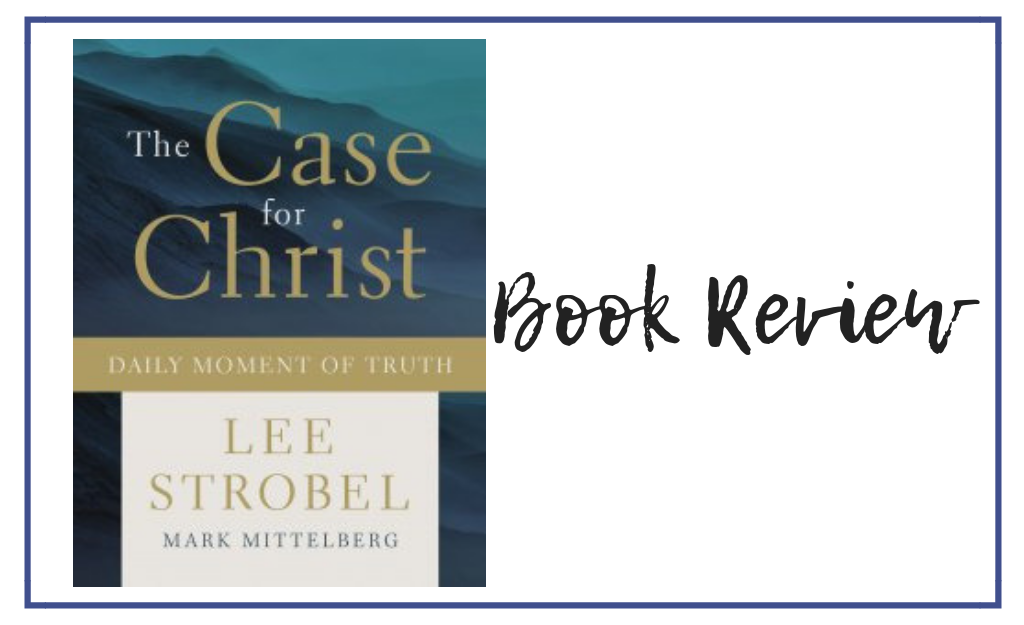
“Biblical faith is not irrational trust. It’s not a blind leap in the dark or a willful rejection of evidence in order to cling to a sentimental superstition or tradition .”

“We wanted to compose these daily devotionals in a way that will not only reinforce the faith of Christians but also make the evidence for the Christian faith accessible to spiritually curious readers—including students—who are interested in better assessing the case for biblical faith .”
“Of all the possible settings on the dial, from one side of the universe to the other, it happens to be situated in the exact right fraction of an inch to make our universe capable of sustaining life .”
More from my site

Valerie, my mother and sisters went to see that movie last year. They enjoyed it. Lee’s story is an excellent example of The transforming power of God’s Word. I hope you are doing well and had a terrific Thanksgiving. Have a fantastic weekend and may God continue to bless you and yours this holiday season.
Hi Horace, The movie was great! I like this devotional as well because it helps me understand the evidence for Christianity.
Submit a Comment Cancel reply
Your email address will not be published. Required fields are marked *
Save my name, email, and website in this browser for the next time I comment.
By using this form you agree with the storage and handling of your data by this website. *

Featured At:

Recent Posts
- How To Find Healing Health For Your Hurting Heart
- Why Your Capability To Love Others Well Comes From God, Not Yourself
- With Every Memory: Book Review
- Stuff I’d Only Tell God: Book Review
- Seven Secrets of the Spirit-Filled Life: Book Review
- The Words We Lost: Book Review
Affiliate Disclaimer

You have Successfully Subscribed!
Pin it on pinterest.
EWTN News, Inc. is the world’s largest Catholic news organization, comprised of television, radio, print and digital media outlets, dedicated to reporting the truth in light of the Gospel and the Catholic Church.
- National Catholic Register
- News Agencies
- Catholic News Agency
- CNA Deutsch
- ACI Afrique
- ACI Digital
- Digital Media
- ChurchPOP Español
- ChurchPOP Italiano
- ChurchPOP Português
- EWTN News Indepth
- EWTN News Nightly
- EWTN Noticias
- EWTN Pro-life Weekly
- Register Radio
Get HALF OFF the Register!
National Catholic Register News https://www.ncregister.com/features/sdg-reviews-the-case-for-christ

- Synod on Synodality
- Most Popular
- Publisher’s Note
- College Guide
- Commentaries
- Culture of Life
- Arts & Entertainment
- Publisher's Note
- Letters to the Editor
- Support the Register
- Print subscriptions
- E-Newsletter Sign-up
- EWTN Religious Catalogue
SDG Reviews ‘The Case for Christ’
The big-screen version of Lee Strobel’s best-selling conversion story makes the case for Jesus’ resurrection — and perhaps the future of faith-based films.

The atheists and nonbelievers in The Case for Christ don’t have horns and tails, or even mustaches for twirling. They aren’t out to crush believers into dust or banish their beliefs from respectable society.
The believers aren’t persecuted, marginalized victims, but capable, respected professionals in fields ranging from medical science and health care to archaeology, New Testament studies, philosophy, journalism and more. The conflict turns on faith and unbelief, but believers and unbelievers aren’t cast as natural enemies.
In other words, The Case for Christ is far from the paranoid, agonistic world of the two God’s Not Dead films, for which Pure Flix Entertainment is best known. Producers Elizabeth Hatcher-Travis and Pure Flix CEO Michael Scott collaborated on all three films — and Lee Strobel, the protagonist of The Case for Christ , cameoed as himself in God’s Not Dead 2 . Yet The Case for Christ is the furthest thing from a God’s Not Dead 3 .
The differences start with the real-life story behind The Case for Christ , Strobel’s conversion story from atheism to Christianity. Where the God’s Not Dead films offer lurid distillations of fundamentalist urban legends, The Case for Christ is about real people — at least, about as much as an average fact-based Hollywood drama.
Strobel was a wunderkind investigative journalist and legal editor for the Chicago Tribune who started working in a newsroom at age 15 and published his first book while still in his 20s (based on his award-winning reporting on the 1980 Indiana v. Ford trial ). Around the same time, he was shocked when agnostic wife Leslie, then pregnant with their second child, converted to Christianity following a crisis involving their first child, Alison. Spurred by her conversion, Lee set out to investigate the evidence for Christianity.
Strobel’s investigation persuaded him of the credibility of the evidence for Jesus’ resurrection. In 1981 he became a Christian, and he eventually left journalism to become a pastor and a writer of Christian books. His 1998 best-seller, The Case for Christ, offers a first-person account of his journey, including interviews with Christian scholars; it also touches on other events in his life at the time, including a story he wrote about a convicted cop-shooter whose story turned out to be quite different than it seemed.
Screenwriter Brian Bird (a longtime partner of Michael Landon Jr. who wrote several episodes of Touched by an Angel ) is an old friend of Strobel. He has a good ear for dialogue; his characters banter, bicker and quarrel like real human beings.
When Leslie (Erika Christensen of NBC’s Parenthood ) tentatively tells Lee (Mike Vogel of The Help and Cloverfield ) what she has experienced, each of them winds up saying things that don’t necessarily come out quite right. Both leads are likable and engaging; Christensen is particularly good in a tricky role, a character whose conversion comes early in the story, who then has to explain and defend what she has experienced and struggle with uncertainty in the aftermath.
The supporting cast is remarkable. Cameos include Faye Dunaway as an agnostic professor of psychology and Robert Forster ( Jackie Brown ) as Lee’s estranged father. L. Scott Caldwell ( Lost ) has a key role as a nurse named Alfie who becomes Leslie’s mentor in faith.
Adding a psychological dimension to Lee’s intellectual journey, the screenplay breaks up Lee’s talky, apologetics-heavy interviews with evangelical luminaries like Gary Habermas (Kevin Sizemore) and William Lane Craig (Rus Blackwell) with a subplot inspired by the cop-shooting case. In this telling, Lee’s coverage is instrumental in putting the innocent man (Renell Gibbs of Barbershop: The Next Cut ) behind bars, heightening the self-doubt he feels when he realizes that his biases led him to misconstrue the evidence.
A third strand turns on Lee’s bitter relationship with his father. Dunaway’s character refers to the “father wound,” an unofficial term used by mental-health professionals to describe the emotional fallout of abusive, antagonistic, distant or absent fathers. Echoing Catholic psychologist Paul C. Vitz, author of Faith of the Fatherless: The Psychology of Atheism , she notes that many atheist luminaries, such as Nietzsche, Sartre and Freud, suffered from such a “father wound.”
This is a controversial theory that atheists persuasively argue has been advanced anecdotally rather than rigorously. Throwing this notion into a drama about evidence for the Resurrection strikes me as a misstep of the kitchen-sink variety, one that weakens rather than strengthens the whole, at least for non-choir viewers.
Perhaps Strobel’s life fits the theory; at any rate, the way the film links the alleviation of Lee’s father wound and his acceptance of God works dramatically. Still, it would have been better if Dunaway’s agnostic character had mentioned the theory skeptically rather than asserting it as fact. This is a case of a character too clearly saying what the writer wants to say rather than what she would really say.
That’s not the only issue. Lee’s discomfort with Leslie’s conversion is believable to a point, but it’s not clear why he’s so hostile — far more than his affable journalism/atheism mentor Ray (Brett Brice), who suggests that Leslie’s faith “may not be such a terrible thing” if it brings her comfort and asks if Lee can’t simply live with it.
Later Ray reminds Lee how much he loves Leslie and advises him to make sure she knows it. Shortly after that, Lee and Leslie enjoy a date night that ends with Leslie telling Lee she loves him more than ever. His response is effectively an ultimatum: He doesn’t like “this version of us” (why?) and can’t see sticking around forever under these conditions. (The real Strobel has said that Leslie’s conversion rocked their marriage, but also that he was positively impressed with the change in her — something that doesn’t come across in the film.)
These aren’t trivial issues, but compared to the phony, didactic marriages in faith-based films like Fireproof or The Song , The Case for Christ always feels at least like a real movie marriage, and sometimes like an actual real marriage. Especially good are both parents’ interactions with little Alison, played by adorable Haley Rosenwasser, who is always unforced and authentic.
The film builds its case for the Resurrection of Jesus in Strobel’s interviews reasonably well; if it oversimplifies, so does any popular movie dealing with complex topics.
An interview with an archaeologist-turned-Catholic priest named Jose Maria Marquez (a composite character played by Miguel Perez) blurs the distinction between the historical value of texts and the reliability of their transmission, but neither question is simply unaddressed. (Los Angeles’ photogenic St. Vincent de Paul Church, previously seen in End of Days and Constantine , stands in for Father Marquez’s parish.)
From Habermas (first glimpsed debating a fictional British atheist), Strobel learns the historical importance of the early Resurrection creedal formula in 1 Corinthians 15:3-5. Craig (in a phone call from Jerusalem) addresses the first witnesses to the empty tomb and the Resurrection being women and the basic consistency of the Resurrection accounts. Physician and research scientist Dr. Alexander Metherell (Tom Nowicki) explains the physiology of the Crucifixion and the medical details of Jesus’ death.
Period details help sell the story and create occasional moments of humor. Lee scrambles for pocket change during an interview via payphone; we also see that he isn’t above planting a bogus “out of order” sign on a courthouse payphone to “reserve” it for his own use after a verdict. The soundtrack includes one obvious, apt period pick: Kansas’ Carry On, Wayward Son , with its heavy lyrical foreshadowing of songwriter Kerry Livgren’s eventual conversion to Christianity.
Diverse casting is another strength. Leslie’s mentor, Alfie, the third most important character, is a black woman; Lee’s editor (Frankie Faison) is black, as is a wrongly convicted character who takes the fall for a dishonest white cop (Judd Lormand). Then there’s Father Marquez: He is not only a Latino, but a Catholic priest in a Pure Flix movie. (Consider that in God’s Not Dead — which was produced and directed by Protestants, but scripted by two Catholics — a reference to the Belgian priest-physicist Msgr. Georges Lemaître , father of the Big Bang theory, was edited to identify him only as a “theist,” not a priest or even a Catholic!)
The Case for Christ gives me hope for the future of faith-based filmmaking. It’s a movie I can imagine watching with a mixed group of Christians and faith-friendly nonbelievers and not cringing and wincing at every scene, which is a huge leap beyond God’s Not Dead . Afterward there would still be plenty of criticism and debate, but this movie has something to contribute to the discussion, rather than only detracting from it.
Steven D. Greydanus is the Register’s film critic and creator of Decent Films . He is a permanent deacon in the Archdiocese of Newark, New Jersey. Follow him on Twitter .
Caveat Spectator: Minor thematic elements, including medical description of crucifixion; a mildly rude expression. Fine for older kids.
- sdg reviews

Steven D. Greydanus
- Related Stories
- Latest News

‘Irena’s Vow’ — Faith and Courage at the Crossroads
This is the story of a heroine who believes that every choice we make for good or evil matters to God and to his plan.

‘Cabrini,’ Though Imperfectly, Tells a Proud Part of Catholic History
COMMENTARY: The saint carries on a tradition of powerful women religious that stretches back centuries.

Alice Guy: The Catholic Pioneer Filmmaker You’ve Never Heard Of
After her prodigious output in the early 1900s, Alice Guy moved to America and launched a movie studio in New Jersey.

Director Andy Erwin Makes Films That Make a Difference
‘Ordinary Angels’ captivates moviegoers with Erwin’s retelling of a dramatic true story on the big screen

In Wake of Euthanasia Case in Peru, Physician-Priest Makes Case for Palliative Care
Meloni said he has personally committed to praying for the family, and especially for Estrada’s soul, appealing 'to the infinite mercy of God.'

Catholic Answers Pulls Plug on ‘Father Justin’ AI Priest
After his fall from virtual grace, the apologetics ‘expert’ to be replaced by lay character.

The Slippery Slope of Non-Discrimination Policies: To Sign or Not to Sign?
DIFFICULT MORAL QUESTIONS: Beware the moral pitfalls that can turn licit toleration into sinful cooperation.

Arizona House Votes to Repeal Law Protecting Life From Moment of Conception
The bill was able to pass, 32-28, as three Republicans joined the Democrats against the pro-life measure.

How Our Trust in God Is Tested Whenever We Pray, the Fayum Mummies and Amarna Princesses, and More Great Links!
The Best In Catholic Blogging

16 Church Fathers vs. Faith Alone
‘… when it is deprived of hope and love, faith does not fully unite the believer to Christ and does not make him a living member of his Body.’ (CCC 1815)

Do Whatever He Tells You
ROSARY & ART: The Second Luminous Mystery is the Wedding at Cana (John 2:1-12)
Cardinal Fernández: New Document on Discerning Apparitions ‘Being Finalized’
I thought of st. michael the archangel, says ‘backpack hero’ of annecy knife attack, united in prayer, bound by loss: how a social-media post led to a powerful bond between two mothers, eucharistic pilgrimage: walking ‘with jesus for jesus’ for the long haul, st. george: a saint to slay today’s dragons, a renewed vision: vatican ii on the church’s hierarchy, ‘an unprecedented opportunity’: augustine institute announces move to st. louis, president biden calls for national right to abortion in campaign speech, subscription options.

Subscriber Service Center Already a subscriber? Renew or manage your subscription here .
Subscribe and Save HALF OFF! Start your Register subscription today.
Give a Gift Subscription Bless friends, family or clergy with a gift of the Register.
Order Bulk Subscriptions Get a discount on 6 or more copies sent to your parish, organization or school.
Sign-up for E-Newsletter Get Register Updates sent daily or weeklyto your inbox.

The Case for Christ: A Review
- 24 April AD 2017
My bride and I went to see The Case for Christ last Saturday. I must admit to some trepidation on my part. I have seen quite a few “Christian” films that had their hearts in the right place but were also simply bad, even laughably bad, films. I was fearful this film would be more of the same. I am pleased to report that The Case for Christ is a very good film, and a profound one. I heartily endorse it for anyone who wishes to see a well-acted and well-made film that asks profound questions about the human condition. My review is below the fold and the usual caveat about spoilers is in full force:
The film is based on Lee Strobel’s book The Case for Christ which details how he, an atheist, set out to disprove the Resurrection and ended up being converted to Christ. The movie opens in 1980. Life is going good for Lee Strobel. A graduate of Yale Law School, Strobel is a legal affairs reporter on the Chicago Tribune. He has won awards for his reporting and has just had a book published: Reckless Homicide? Ford’s Pinto Trial . He has a lovely wife, Leslie, and they have a little girl, Alison. Professional success and marital bliss, what more could a man ask for? Then the divine enters into the picture.
Strobel is portrayed by Mike Vogel, who makes Strobel a fully developed character, warts and all, as does Erika Jane Christensen as Leslie Strobel. Their dialogues as man and wife seem completely authentic and never stagey or stilted.
The film does a great job of recreating the period, one my bride and I lived through as young adults. We see the reporters banging away at their electric typewriters in those pre-word processor, at least in common use, days. Strobel’s editor has a word processor, but quickly banishes it to a corner of his office out of frustration with how slow it is. In one hilarious sequence, which will seem bizarre to anyone much under 40, we see a line of people waiting to use a pay phone. (An adjacent payphone has an out of order sign on it which Strobel casually removes as he uses the supposedly out of order phone to the chagrin of the waiting people, one of many humorous scenes in the film.) Tacky dark wood paneling abounds. Strobel’s father appears wearing a light blue leisure suit, that fashion atrocity of the period, which reminded me of a dark blue suit that my father wore at the time. This will be a trip down memory lane for people, geezers, of my vintage.
The divine enters the film when Strobel and his wife and daughter go out to dine in a restaurant. The little girl begins to choke on some food and stops breathing. Frantic, Strobel and his wife, attempt to aid their daughter but without success. A black nurse, Alfie Davis portrayed by L. Scott Caldwell, who is out with her husband runs up and dislodges the fragment of food from the child’s throat, saving her life. To the fervent thanks of the parents she says that she and her husband had been intending to go to another restaurant but that Jesus Christ had told her that she needed to be at this restaurant. After the Strobels arrive back home we learn that they are atheists. Strobel doesn’t think much of the incident other than he is relieved that his daughter got through it unharmed. However, his wife can’t stop thinking about it and what the nurse had said about Christ.
Leslie Strobel visits the nurse at the hospital where she works to bring her muffins she has baked as a thank you present. She confides in the nurse that she cannot stop thinking about what had happened and the nurse invites her to attend her church, Willow Creek Community Church in the Chicago suburb of South Barrington.
Leslie Strobel begins to attend the church and becomes a Christian, much to the dismay of her husband. He views Christianity as a false cult and is appalled that his wife is now part of it. He argues with her frequently about it and tells her that if she persists as a Christian their marriage will be at an end. He decides that the best avenue to rescue his wife from Christ is by attacking what he perceives to be the central event of Christianity: the Resurrection of Christ. He will use his journalistic skills to disprove the Resurrection.
Contacting experts around the globe he begins to learn disheartening facts: the New Testament has more surviving manuscripts than any other document from antiquity; the fact that women discover that Christ’s tomb is empty is an argument for the truth of the account since any first century Jewish male making up such a tale would not have women in a central role as the testimony of women was considered inherently unreliable in the Jewish legal system and excluded in Jewish trials. Consulting a world-famous psychologist, Doctor Roberta Waters (portrayed by Faye Dunaway), he is crushed when she, an agnostic, punctures his theory that the hundreds of witnesses to the Resurrected Christ could have been suffering from “mass hysteria”. She says that such an occurrence would have been a greater miracle than the Resurrection. She also reminds him that many of the notable atheists in history had “Daddy issues” as a result of dead, absent or cold and indifferent fathers. This strikes home with Strobel who has a bad relationship with his own father. Only after his father’s death does he learn that his father took great pride in him and kept a scrapbook of the newspaper articles Strobel wrote.
Seeing that he cannot get around the testimonies of those who saw Christ alive after the Resurrection, Strobel embraces the old “swoon theory” that Christ did not actually die on the Cross. Traveling to California, he consults with Doctor Alexander Metherell (Tom Nowicki) who tells him that in his medical opinion Christ died on the Cross. To the observation by Strobel that the Roman soldiers were not trained medical men and could have been mistaken about Christ being dead, Metherell responds that they were trained killers and quite good at it since if a prisoner escaped their clutches they would face execution. Metherell mentions that Christ, even before the Crucifixion, was likely in critical condition due to blood loss from his brutal scourging, which led to his three fallings on the Via Dolorosa. He describes the death by asphyxiation of the crucified, where they constantly try to raise themselves up on their crosses in order to exhale, eventually losing the energy to do so and dying as a result, and that the blood and water emanating from Christ’s side from the spear thrust of Longinus was conclusive evidence of this asphyxiation in the case of Christ.
Reluctantly, oh so reluctantly, Stobel accepts the evidence that the Resurrection happened, and tells his wife, to her joy, that he is also embracing Christ.
The film gives us something rarely depicted on film: two realistic conversion stories. Of the two, although the focus of the film is on that of Lee Strobel, the conversion of his wife is perhaps more meaningful. Something dramatic happens in a person’s life and they suddenly confront some of the big questions we all face in life, although many of us try to hide from them: Why am I here? Is there a meaning to life? How should I live? What will happen to me after I die? The current fad of atheism gives no answer to these questions other than that life is meaningless and that we are but brief candles in the gale. The essential strength and power of Christianity is that Christ gives us answers to these questions and fills each of our lives with eternal significance.
A great movie on a subject that confronts us all with the question that Christ posed to Peter so long ago: “Who do you say that I am”?
- Share on Tumblr
Donald R. McClarey
I have Lee Strobel’s Study Bible in my collection somewhere:
http://www.zondervan.com/the-case-for-christ-study-bible
It is typically Evangelical Protestant and is missing the Deuterocanonicals, but otherwise it isn’t bad.
Very good review, thanks. MrsD and I saw The Promise last night. Any plans for a review here?
I am intrigued by what I have seen of that film in trailers. If it is at a theater close to us my bride and I may go to see it.
I thought it a very good movie. It used a love triangle plot to move the characters around so that some of the major threads of the genocide could be depicted. I thought about 5 minutes of triangle dialog could have been cut, MrsD disagreed. We both agreed that the post-riot bed scene added nothing to the film.
Historical inaccuracies: 1) The brutality and violence was severely underplayed. 2) The religious motivation for the conflict was underplayed 3) The timeline was inaccurate. It shows the roundup of Armenian intellectuals in April 1915, then the next scene has a title that reads “Six months later…” Problem is the climatic battle and rescue at the end would have happened 3 to 5 months later (the battle went on for 59 days, a fact that is astounding given the circumstances and not mentioned in the film). Yes, please see it.
Problem is the climatic battle and rescue at the end would have happened 3 to 5 months later in July – September 1915 Apologies for the lack of clarity
Eventually, Strobel comes to believe because he says not believing takes a greater leap of faith than believing. In other words, accepting Jesus is simply a logical choice. For some reason I can’t quite determine, that was unsatisfactory to me. Possibly because it totally discounts faith and reduces belief to something quantifiable.
Discover more from The American Catholic
Subscribe now to keep reading and get access to the full archive.
Type your email…
Continue reading
- Forgiveness
- Resurrection

- Progressive Christian
- Religion News
Review of Lee Strobel’s book, “The Case for Christ:” Part 1 of 2

Then Lee Strobel came to a place in his life where he looked more deeply into the identity of Jesus of Nazareth. But Strobel began this spiritual quest from the wrong premise–whether or not Jesus is God. He should have begun his journey with the question of whether or not Jesus was Israel’s Messiah sent by God to die for our sins on the cross and arise from the dead, thereby making himself available to us as our Savior from sin by God forgiving us and giving us eternal salvation. That is what the New Testament is all about.
But no, Strobel was converted and went way beyond these New Testament precepts to proclaim that Jesus is God. Of course, it is interesting to learn stories of people who were atheists and then converted to faith in Jesus. But faith in Jesus as Savior is not the same as believing Jesus is God.
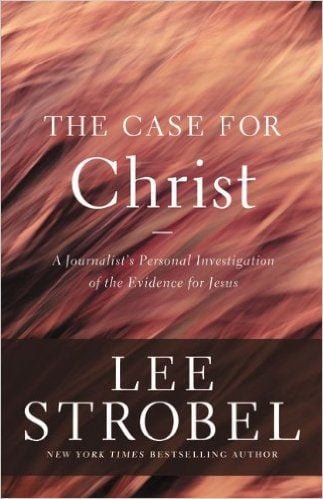
Just for starters, check these out: (1) Jesus never claims to be God in any of his New Testament gospel sayings; (2) Jesus clearly embraced Jewish monotheism, that God, whom Jesus called “Father,” is numerically one, thus a single person (e.g., John 5.44; 17.3; Mark 12.28-34); (3) Jesus said, “The Father is greater than I” (John 14.28); (4) the two times when Jesus was accused of making himself God or equal with God, he denied it (John 5.18-47; 10.30-38); (5) at Jesus’ hearing before the Sanhedrin, he was’t accused of ever claiming to be God; (6) in all of the evangelistic sermons and statements in the book of Acts, nothing is said about Jesus being God; (7) and there is no discussion or argument recorded in the New Testament about whether or not Jesus is God. All of this indicates that it is highly questionable that the New Testament ever says Jesus is God. Many of the few biblical texts that scholars put forth as evidence that Jesus is God have grammatical difficulties and therefore likely do not say Jesus is God.
As with Strobel, so with me–it wasn’t always so. I was a Trinitarian Christian for 22 years and involved in ministry on the PGA Tour for seventeen years. Then I had a eureka moment one day while reading Jesus Olivet Discourse that changed my theology and life forever. See “ At Forty Years Old I Best Saw the Light–Trinity Doctrine No Longer Seemed Right .”
Like the good journalist that Strobel was, he crafted his book The Case for Christ based on interviews he conducted with thirteen of illustrious Evangelical scholars in the U.S. academy. They include Craig Blomberg, Bruce Metzger, Edwin Yamauchi, Gregory Boyd, Ben Witherington, Don Carson, William Lane Craig, and Gary Habermas. I respect all of these men and have many of their books in my library. Yet I think they are wrong to have followed church fathers on this topic, claiming Jesus is God.
William Lane Craig, who appears often on television, has become the most prominent apologist for Christian faith in the U.S. In Strobel’s interview with Dr. Craig, he quotes him as saying (p. 30), “‘Son of Man’ is often thought to indicate the humanity of Jesus, just as the reflex expression ‘Son of God’ indicates his divinity. In fact, just the opposite is true. The Son of Man was a divine figure in the Old Testament book of Daniel who would come at the end of the world to judge mankind and rule forever. Thus, the claim to be the Son of Man would be in effect a claim to divinity.”
I disagree. Daniel relates his vision about “one like a son of man, coming with the clouds of heaven,” approaching the enthroned God in heaven, and being given a great kingdom of people (Daniel 7.13-14 NIV). There is nothing in this text indicating this Son of Man is God. Quite the contrary, the Bible repeatedly says there is numerically one God, whom it often identifies as “the Most High.” And Jesus often alluded to this Daniel text when he constantly identified himself as the Son of Man. And clouds certainly don’t indicate deity, as some scholars claim, since believers will be resurrected in the future and “be caught up in the clouds” as well (1 Thessalonians 4.17).
In Strobel’s interview of Dr. Craig Blomberg (p. 29), the latter cites Jesus saying “I am” in John 8.58 as evidence of Jesus indirectly claiming to be God. Blomberg and many others make this assertion by connecting this “I am” (Greek ego eimi ) with that said by God in Exodus 3.14. But God only means by it that he is “The LORD,” which he says in v. 15 and is Yahweh (Hebrew YHWH), God’s name. (Bible translation tradition never transliterates God’s name, YHWH, but renders it “the LORD.”) Most New Testament scholars say Jesus never claimed to be Yahweh. Regardless, Jesus likely meant in John 8.58 that he ranks superior to Moses. (See my Restitution of Jesus Christ book on this.)
Strobel also quotes Blomberg saying (p. 30), “Jesus claims to forgive sins in the synoptics, and that’s something only God can do.” Blomberg refers to Mark 2.10 and Matt. 9.5. But later, when Jesus was accused of claiming to be “equal to God” (John 5.18), he extensively denied it (vv. 19-47). He therein said of himself as the Son, “For just as the Father has life in himself, so he has granted the Son also to have life in himself; and he has given him authority to execute judgement, because he is the Son of Man” (vv. 26-27). So, God gave Jesus the authority to judge by either forgiving sins or not forgiving sins. If Jesus was God, the authority to forgive sins would be intrinsic to his nature so that he would not have had to be given this authority.
In Strobel’s interview of my friend Ben Witherington, Lee said to the good Doctor (p. 135), “‘Certainly you can’t say that Jesus’ miracles establish that he thought he was God.’ I said, ‘since later his own disciples went out and did the same things–and certainly they weren’t making claims of deity.'”
Ben answered, “No–to Jesus, his miracles are a sign indicating the coming of the kingdom of God.” That is quite right. But in one of my previous posts, entitled “ Ben Witherington Entangles Himself by Deifying Jesus ,” I mention that Ben gave a lecture, now online, in which I say Ben “cites the Devil’s temptation of Jesus to turn stones into bread, recorded in Matt. 4.3 and Luke 4.3. Ben says the Devil would not have tempted Jesus like that unless he was God because only God could do such a miracle.”
WOW! I must say, Ben, I was shocked by this from a scholar of your stature. Many Christians throughout the ages have thought likewise, that Jesus was God because he did miracles, and many have thought this since Jesus arose from the dead. But so many Bible scholars of various stripes have rightly alleged that this kind of thinking is so short sighted. Prophets and Jesus’ apostles did miracles, and all of God’s people will arise from the dead to receive immortal bodies at the resurrection at the end of the age; yet none of these things prove that any of these people were God. So, I’m only saying the same thing in that post that Strobel said to Witherington, with which he agreed. I don’t know if Ben realizes that he made a contradiction between these two statements.
But Strobel makes the same contradiction in some statements of his own in The Case for Christ . He had earlier stated with approval concerning Jesus’ resurrection (p. 35), “The Resurrection–which is cited by Christians as the crowning confirmation of Jesus’ divinity.” Strobel later says (p. 206), “The Resurrection is the supreme identification of Jesus’ divine identity.” Both statements contradict what Lee said to Ben, above.
As Strobel concludes his book he says (p. 262), “Jesus backed up his claim to being God through miraculous claims of healing,… and with his own resurrection, which was the final authentication of his identity.” Again, this is a clear contradiction to what Strobel earlier writes that he said to Witherington. Now, Strobel is not the first to say Jesus’ resurrection proves he was God; many Christians have erroneously thought that. But it is shallow thinking. The Bible proclaims that all of God’s people who have died will arise on Resurrection Day, and no one thinks that will prove they all are Gods.
N. T. (Tom) Wright does well in attempting to correct this misconception in his book, The Challenge of Jesus. He says, (p. 130), “A serious problem that needs addressing … is that the resurrection [of Jesus] has from fairly early on in the church been regarded as the proof of Jesus’ divinity.” Wright also explains (p. 108), “Again and again one hears it suggested that the resurrection somehow proves Jesus’ divinity, so that to affirm or deny the one is to affirm or deny the other.” Wright calls this a “mistake.” He adds, “Nothing in the Jewish expectation of resurrection indicates that anyone would conclude that, faced with someone alive again with a new sort of life following death, such a person must be in some sense divine. To the contrary: resurrection was what was supposed to happen to all the dead, or at least all the righteous dead, and there was no suggestion that this would simultaneously constitute divinization.”
C. S. Lewis, whom I otherwise much respect, commits the same errors in his bestseller Mere Christianity . Both he and Strobel assert in these books, which have been their most successful, that Jesus even claimed to be God. Yet it is astonishing that both authors never try to prove it. Thus, they don’t even cite and discuss any New Testament gospel sayings of Jesus in which they believe he claimed to be God. At least one would think Jesus’ saying in John 10.30 would be cited–“I and the Father are one”–since some church fathers wrongly asserted that Jesus therein claimed to be God.
I don’t see how such successful authors get away with such an assertion without being challenged to defend what is a very serious declaration–that Jesus claimed to be God. No, he did not, that is, if you believe the Bible! Even the leading evangelical, New Testament scholars, e.g., James D. G. Dunn and Tom Wright, now admit not only that Jesus never claimed to be God; they say he never believed he was God. See these posts:
“ Tom Wright Says Jesus Didn’t Know He Was God ”
“ Does Tom Wright Believe Jesus Is God ”
“ Review of Tom Wright’s ‘Jesus and the Identity of God ‘”
“ Review of Jimmy Dunn’s Book, ‘Did the First Christians Worship Jesus? ‘”
Finally, to see how weak Stroebel and his interviewees are on proving from scripture that Jesus is God, The Case for Christ does not even have a Scripture Index.
In conclusion, Jesus was a perfectly righteous man sent by God to die for our sins on the cross, and God proved it by raising him from the dead. That is the message of the New Testament that we Christians should proclaim to the world and not mix it with the error, adopted by church fathers who were influenced by Hellenism, that Jesus is God and that God is three persons.
(See Part 2 of this review, posted on May 7, 2017, by clicking here .)
(To see a titled list of over seventy, two-three page posts (easily accessible) about the Bible not saying Jesus is God, click here .)
- Book Reviews
- Ben Witherington
- Is Jesus God?
- Lee Strobel
- William Lane Craig

- Library of World Religions
- Advertise With Us
- Write for Us
- Privacy Policy
- Terms of Service
- Do Not Sell My Data
- Radiant Digital
- Manage Newsletter Subscriptions
- Unsubscribe From Notifications
- Skip to main content
- Skip to secondary menu
- Skip to primary sidebar
- Skip to footer

Catholic Review
Inspiring the Archdiocese of Baltimore
‘The Case for Christ’ and a stubbornly historical religion

By Bishop Robert Barron
The Case for Christ is a film adaptation of Lee Strobel’s best-selling book of the same name, one that has made an enormous splash in Evangelical circles and beyond. It is the story of a young, ambitious (and atheist) reporter for the Chicago Tribune, who fell into a psychological and spiritual crisis when his wife became a Christian. The scenes involving Lee and his spouse, which play out over many months of their married life, struck me as poignant and believable – and I say this with some authority, having worked with a number of couples in a similar situation. In some cases, a non-believing spouse might look upon his partner’s faith as a harmless diversion, a bit like a hobby, but in other cases, the non-believer sees the dawning of faith in his beloved as something akin to a betrayal. This latter situation strongly obtained in the Strobel’s marriage.
In order to resolve the tension, Lee used his considerable analytical and investigative skills to debunk the faith that was so beguiling his wife. The focus of his inquiry was, at the suggestion of a Christian colleague at the Tribune, the resurrection of Jesus. If Jesus didn’t rise, his friend explained, Christianity crumbles like a house of cards. The narrative unfolds, then, as a kind of detective story, Strobel hunting down leads, interrogating experts, asking the hard questions.
I liked this for a couple of reasons. First, at its best, Christianity is not fideist, that is to say, reliant upon a pure and uncritical act of faith on the part of its adherents. Rather, it happily embraces reason and welcomes critical questions. Secondly, and relatedly, Christianity is a stubbornly historical religion. It is not a philosophy (though it can employ philosophical language), nor is it a spirituality (though a spirituality can be distilled from it); rather, it is a relationship to an historical figure about whom an extraordinary historical claim has been made, namely, that he rose bodily from the dead.
Now especially in recent years, many attempts have been made to mitigate the scandal of this assertion. Jesus was a great moral exemplar, a powerful teacher of spiritual truth, an inspiring man of God – and it doesn’t particularly matter whether the reports of resurrection are factually accurate. Indeed, it is probably best to read them as mythic or symbolic. To all of that, classical Christianity says no. It agrees with Lee Strobel’s colleague: if the resurrection didn’t happen, Christianity should be allowed to fall onto the ash heap of history. Therefore, watching our intrepid investigator go about his work is, for a true Christian, thrilling, precisely because the questions are legitimate and something is very really at stake.
So what were his inquiries? First, he wondered whether the resurrection stories were just fairy tales, pious inventions meant to take away our fear of death. But he learned that, in point of fact, many people claimed to have seen Jesus after his crucifixion, including five hundred at once. Moreover, most of the leaders of the early Church went to their deaths defending the legitimacy of what they taught. Would anyone do that for a myth or a legend of his own invention?
But another question came to his mind: might they all have been victims of a mass hallucination? A psychologist patiently explained that waking dreams are not shared by hundreds of people at different times and different places. “If hundreds of individuals had the same hallucination, that would be a greater miracle than the resurrection,” she informed him with a smile.
But what about the reliability of the Christian texts themselves? Weren’t they written long after the events described? A Catholic priest, who is also an archeologist and specialist in ancient manuscripts, told him that the number of early copies of the Christian Gospels far surpasses that of any other ancient text, including the Iliad of Homer and the Dialogues of Plato.
What about the “swoon theory,” according to which Jesus did not really die on the cross but only lost consciousness, only to be revived sometime later? A Los Angeles based physician detailed for him the brutal process of a Roman execution, which resulted in the victim slowly bleeding to death and asphyxiating. The swoon theory, the doctor concluded, “is rubbish.”
At each stage of the process, Strobel continued to wonder, question, balk, and argue, all the time maintaining the default position that Christianity is bunk. Nevertheless, it was becoming clear that the relentlessness of the counter-arguments and their stubborn congruence with one another was wearing him down. This made me think of John Henry Newman’s famous account of how we come to religious assent. It is very rarely by virtue of one clinching argument, Newman said, but rather through the slow, steady confluence of inference, hunch, intuition, experience, the witness of others, etc. This convergence of probabilities, under the aegis of what Newman called the “illative sense,” customarily leads the mind to assent.
In the course of their conversation, Strobel’s priest-archeologist interlocutor showed the skeptical journalist a reproduction of the Shroud of Turin, purported to be the burial cloth of Jesus. Gazing into the eyes of the image, Strobel asked, “What would have made him go through all of this?” The priest responded, “That’s easy: love.” As the arguments were jostling in his head, Strobel remembered that image and that explanation – and the filmmakers insinuate that this is what finally pushed him over into belief.
The Case for Christ is interesting for any number of reasons, but I think it is particularly compelling for its subtle portrayal of the psychological, spiritual, and intellectual dynamics of evangelization.
Read more commentary here .
Real Life. Real Faith.
Catholic Review Media communicates the Gospel and its impact on people’s lives in the Archdiocese of Baltimore and beyond.
Our Mission
Catholic Review Media provides intergenerational communications that inform, teach, inspire and engage Catholics and all of good will in the mission of Christ through diverse forms of media.
Catholic Review 320 Cathedral Street Baltimore, MD 21201 443-524-3150 [email protected]
Social Media
- Black Catholics weigh in on Seek the City proposal
- Georgia senator says he prayed with and spoke to pope about peace
- Human rights advocate: Dictatorship profanes Nicaraguan churches
- A Eucharistic Word: Spiritual Communion
- Biden campaigns on abortion in Florida, seeking to turn increasingly red state back to blue
- Faith, hope, love are antidote to pride, pope says at audience
- Man stabs parishioner, says ‘Jesus is not real,’ outside San Francisco church during confirmations
- Feds say Catholic activist behind D.C. abortion clinic blockade merits 6.5 years in prison
- Texas Carmelites file for restraining order, defying Vatican’s latest governance directive

Catholic Media Assocation
Maryland-Delaware-DC Press Association
The Associated Church Press

IMAGES
VIDEO
COMMENTS
The Case For Christ should be required reading for all Christians. A bold statement, I know, but it truly is an incredible book. I certainly would not say it is the best book I've ever read, nor the most profound. But what this book does, and does very well, is set forth in a clear and unequivocal manner, the evidence that Christ existed and ...
An atheist, Strobel felt certain his findings would bring Christianity's claims about Jesus tumbling down like a house of cards. He was in for the surprise of his life. Join him as he retraces his journey from skepticism to faith. You'll consult expert testimony as you sift through the truths that history, science, psychiatry, literature, and ...
The Case for Christ records Lee Strobel's attempt to "determine if there's credible evidence that Jesus of Nazareth really is the Son of God." The book consists primarily of interviews between Strobel (a former legal editor at the Chicago Tribune ) and biblical scholars such as Bruce Metzger.
THE CASE FOR CHRIST STUDENT EDITION is an excellent Christian witness and reference resource. Having also read the original complete edition, THE CHASE FOR CHRIST (367 pgs), I found that Strobel's easy read student edition (115 pgs) to be very accessible for friends that are not only reluctant but are also self proclaimed "non-readers".
Based upon the Gold-Medallion award-winning best-seller, The Case for Christ documents Lee Strobel's journey from atheism to faith through his two-year investigation of the Bible and the life of Jesus Christ. Strobel, the former legal editor of the Chicago Tribune, draws upon his investigative skills to examine the historical accuracy of the Gospels, the personal claims of Jesus and His ...
Get a full book summary of The Case for Christ by signing up for Shortform. Shortform summaries help you learn 10x faster by: Being 100% comprehensive: you learn the most important points in the book; Cutting out the fluff: you don't spend your time wondering what the author's point is. Interactive exercises: apply the book's ideas to your own ...
What will your verdict be in The Case for Christ 'Lee Strobel probes with bulldog-like tenacity the evidence for the truth of biblical Christianity.' Bruce M. Metzger, Ph.D., Professor of New Testament, Emeritus, Princeton Theological Seminary 'Lee Strobel asks the questions a tough-minded skeptic would ask. ... (Books) Customer Reviews: 4.8 4. ...
The Case For Christ by Lee Strobel Lee Strobel is an amazing writer. Being a former atheist with a background in law and journalism, he attacked the issue head on and straight to the heart of the matter. He was not searching for the meaning of Christ's sacrifice, or the love of Christ that has changed so many lives already, but instead he went to tackle perhaps the most fundamental thing ...
Product Details. Imprint: Zondervan. On Sale: 1998-08-25. Pages: 416. Publisher: Zondervan. Publication Date: 1998-08-25. Trim Size: 4.130in x 6.750in x 1.130in. Weight: 199.000gr. A seasoned journalist chases down the biggest story in history Is there credible evidence that Jesus of Nazareth really is the son of God?
S et in Chicago in 1980 and based on the bestselling book by former atheist Lee Strobel, The Case for Christ makes the exact argument its title promises. Strobel (Mike Vogel) is an arrogant ...
The Case for Christ, by Lee Strobel, originally published in 1998, follows Strobel's nonfiction, journalistic investigation into the claims of Christianity.Strobel is both a journalist and a lawyer—he earned an undergraduate degree in journalism from the University of Missouri and a law degree from Yale before joining the Chicago Tribune as a legal affairs editor.
Lee Strobel brings both qualifications to this remarkable book. In addition to his own tremendous testimony as atheist-turned-Christian, the author marshals the irrefutable depositions of recognized "expert witnesses" to build his ironclad case for Jesus Christ. The Case for Christ sets a new standard among existing contemporary apologetics."
In this revised and updated bestseller, The Case for Christ, Lee Strobel cross-examines a dozen experts with doctorates from schools such as Cambridge, Princeton, ... There was a problem filtering reviews right now. Please try again later. Priscilla Claudia Tamara. 5.0 out of 5 stars Great! Reviewed in Singapore on 30 June 2020.
Read on Amazon. 3 Sentence Summary. With the rigor of a seasoned investigative journalist, Lee Strobel's New York Times bestselling apologetic builds a progressive argument for the reliability and trustworthiness of the New Testament gospels. Through a dozen interviews with world-renowned experts, Strobel tests the accuracy of the gospel narrative and addresses popular critics that challenge ...
Also available: The Case for Christ Spanish edition, kids' edition, and student edition. Plus, be sure to check out Lee Strobel's entire collection of Case for books: The Case for a Creator explores the scientific evidence for God; The Case for Grace uncovers the "how" and "why" behind God's amazing grace
New York Times best seller!. Over 5 million copies sold! Is there credible evidence that Jesus of Nazareth really is the Son of God? Former atheist and Chicago Tribune journalist Lee Strobel takes an investigative look at the evidence from the fields of science, philosophy, and history. In this revised and updated bestseller, The Case for Christ, Lee Strobel cross-examines a dozen experts with ...
The Case For Christ: Book Review. I saw the movie, A Case For Christ with my family last year. We loved it! While trying to disprove the newfound faith of his wife, the award-winning journalist, Lee Strobel, ends up becoming a Christian. He is now a Christian apologist and has written many books about faith.
In 1981 he became a Christian, and he eventually left journalism to become a pastor and a writer of Christian books. His 1998 best-seller, The Case for Christ, offers a first-person account of his ...
The Case for Christ: A Review. 24 April AD 2017. My bride and I went to see The Case for Christ last Saturday. I must admit to some trepidation on my part. I have seen quite a few "Christian" films that had their hearts in the right place but were also simply bad, even laughably bad, films. I was fearful this film would be more of the same.
Lee Strobel brings both qualifications to this remarkable book. In addition to his own tremendous testimony as atheist-turned-Christian, the author marshals the irrefutable depositions of recognized "expert witnesses" to build his ironclad case for Jesus Christ. The Case for Christ sets a new standard among existing contemporary apologetics."
In Strobel's most popular book, The Case for Christ (1998, Zondervan, p 13), he relates, "For much of my life I was a skeptic. In fact, I considered myself an atheist…. In fact, I considered ...
Find helpful customer reviews and review ratings for The Case for Christ at Amazon.com. Read honest and unbiased product reviews from our ... It was really a comet that dates Christ's birth to 4 B.C. as presented in another book called The Great Christ Comet. One person found this helpful. Helpful. Report gldwing57. 5.0 out of 5 stars Very ...
By Bishop Robert Barron. The Case for Christ is a film adaptation of Lee Strobel's best-selling book of the same name, one that has made an enormous splash in Evangelical circles and beyond. It is the story of a young, ambitious (and atheist) reporter for the Chicago Tribune, who fell into a psychological and spiritual crisis when his wife became a Christian.